

|
 |
Phenomena AKA Creepers (Blu-ray)
[Blu-ray]
Blu-ray B - United Kingdom - Arrow Video Review written by and copyright: Paul Lewis (17th May 2017). |
|
The Film
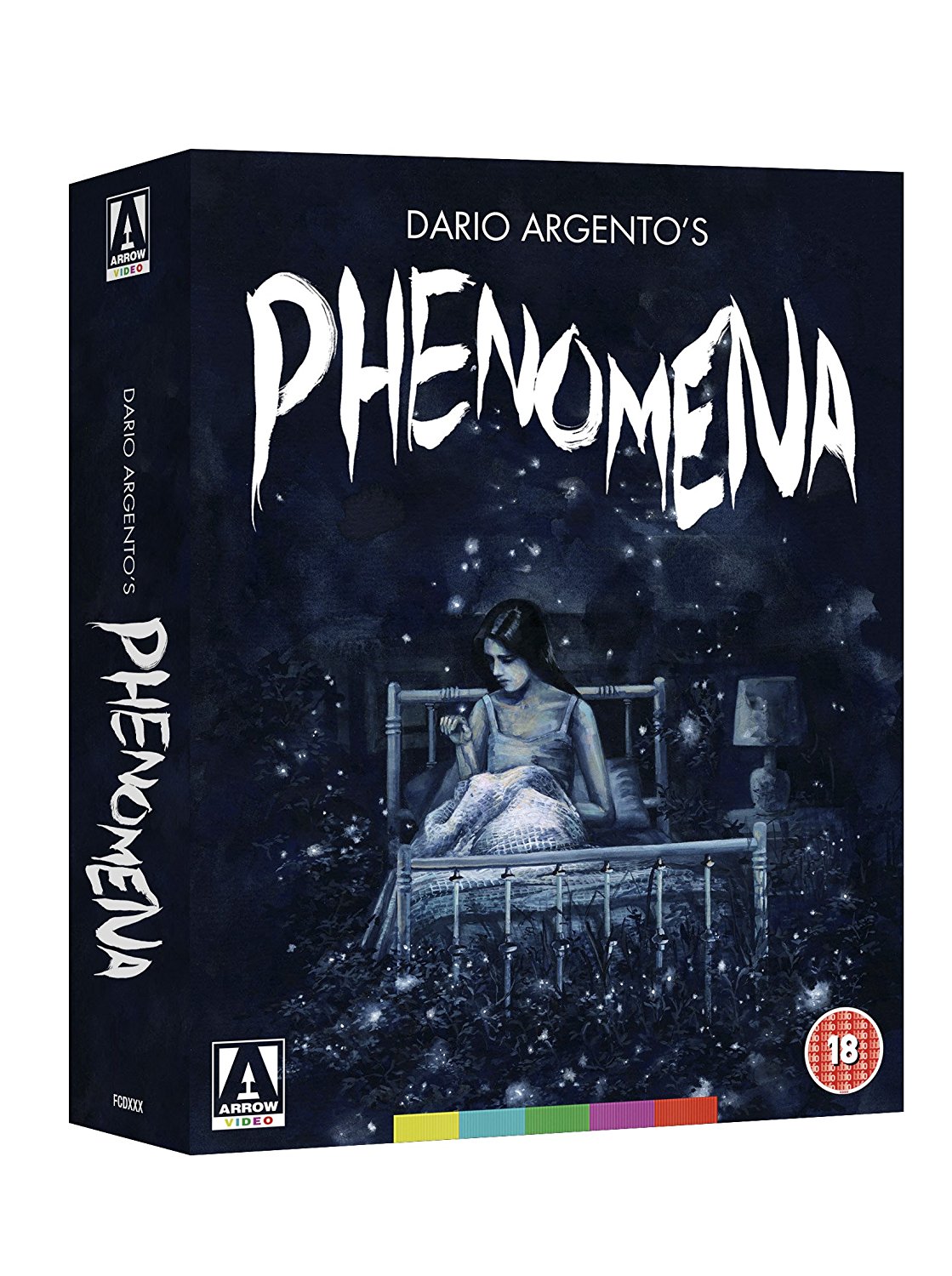 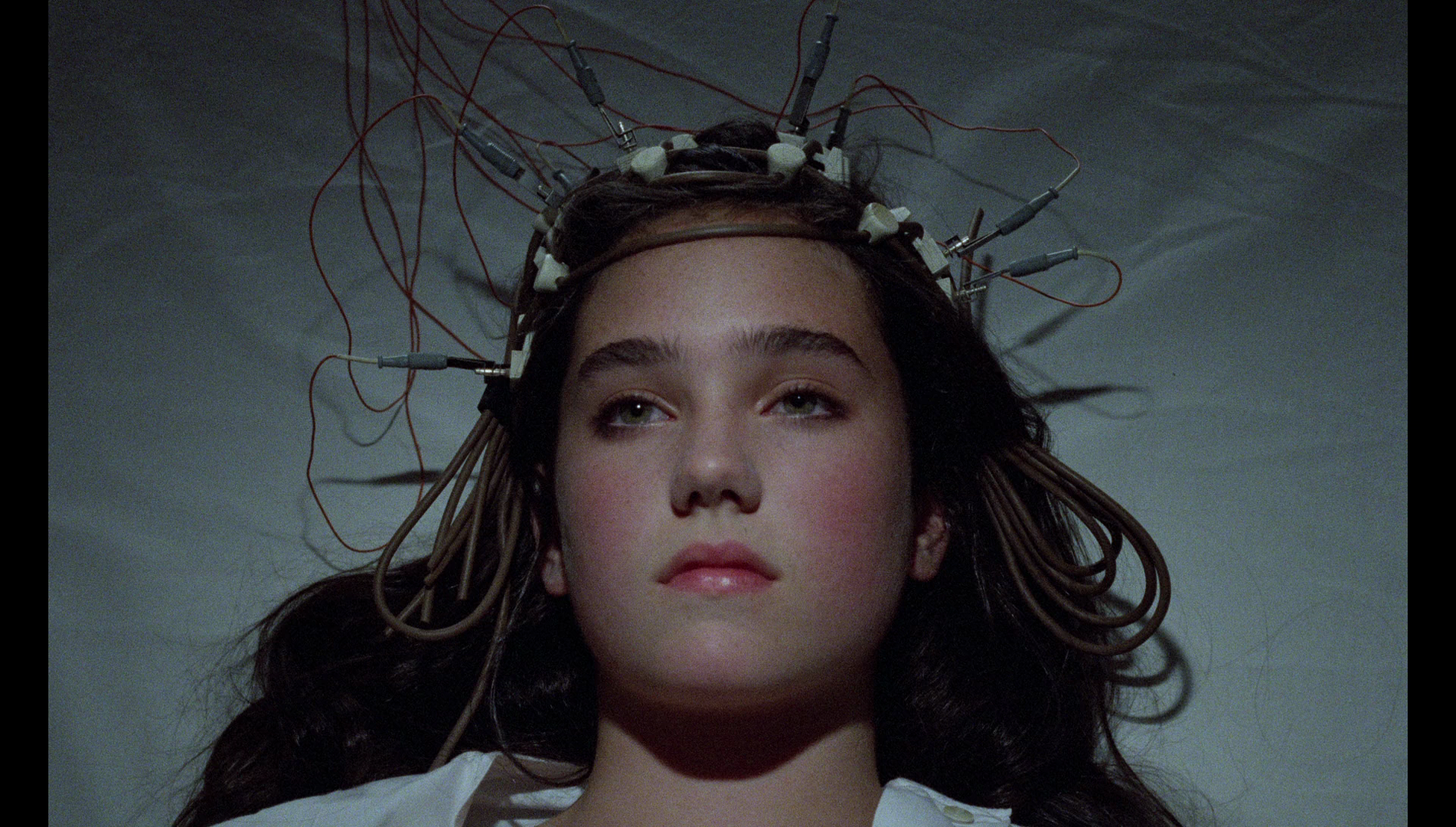 Phenomena / Creepers (Dario Argento, 1985) Phenomena / Creepers (Dario Argento, 1985)
An oddball mixture of thrilling all’italiana/giallo all’italiana (Italian-style thriller) and eccentric horror-fantasy elements, Dario Argento’s Phenomena (1985) was first seen by most English-language viewers via its heavily abbreviated export cut entitled Creepers. This edit of the film lost almost half an hour of footage, including both moments of violence and narrative footage; the edits condensed the film’s narrative, foregrounding its strange setpieces and thereby amplifying the film’s jarring shifts in tone and approach to its subject matter. As a result, the film was held in relatively low regard even by Argento fans, often cited as a symbol of the director’s perceived ‘decline’ during the 1980s. The jarring use of Iron Maiden’s ‘Flash of the Blade’ in a couple of sequences, including once in a sequence that would normally be underscored by mournful music (Argento’s first counterpunctive use of a ‘found’ heavy metal track in his films, an effect continued in 1987’s Opera) was frequently singled out for particular criticism. Watching the film on its initial release was a disappointing experience; seeing the longer 110 minute cut via the Roan Group LaserDisc in the late 1990s (and, shortly after, via Anchor Bay’s US DVD release), and later the 116 minute ‘integral’ version (released on LaserDisc in Japan in 1997, and on DVD in various territories throughout the 2000s) gave a greater sense of context to the film’s moments of out-and-out strangeness, though for some of the picture’s most staunchest critics, these extended versions simply made an already tedious film even more tedious, and an already incoherent film became for them even more incoherent. Like most of Argento’s post-Tenebrae (1982) films, Phenomena is a Marmite picture – even amongst fans of the director. The film opens with a Danish tourist, Vera Brandt (Fiore Argento), left behind at a remote Swiss location when the coach she is due to catch leaves without her. Brandt stumbles across a house and enters it. She is attacked but manages to flee. She is pursued and stabbed in the belly near a waterfall before being decapitated, her severed head falling into the raging waters below.  Wheelchair-bound entomologist Dr John McGregor (Donald Pleasance), an expert in cadaveric fauna, has assisted the police in solving crimes; he is introduced talking to Inspector Geiger (Patrick Bauchau) and Geiger’s assistant Kurt (Michele Soavi) about Vera Brandt’s severed head, which has been found eight months after the girl’s death. McGregor introduces Geiger to his ‘nurse’, a chimp named Inge. Wheelchair-bound entomologist Dr John McGregor (Donald Pleasance), an expert in cadaveric fauna, has assisted the police in solving crimes; he is introduced talking to Inspector Geiger (Patrick Bauchau) and Geiger’s assistant Kurt (Michele Soavi) about Vera Brandt’s severed head, which has been found eight months after the girl’s death. McGregor introduces Geiger to his ‘nurse’, a chimp named Inge.
Jennifer Corvino (Jennifer Connelly), teenaged daughter of heartthrob actor Paul Corvino, has arrived in Switzerland to take her place at a boarding school situated on the former estate of Richard Wagner during his time in exile. At the school, Jennifer meets her roommate Sophie (Federica Mastroianni) and the authoritarian headmistress (Dalila Di Lazzaro). At night, Jennifer sleepwalks; she awakens at a first floor window on the outside of a building, where she sees a girl murdered – a spear thrust through the back of the girl’s head and the tip protruding from her mouth. In shock, Jennifer falls from the building and tries to find her way back to the school. She finds herself at the home of Dr McGregor, who invites Jennifer in and gives her the coat of his friend Greta, who has disappeared and who McGregor assumes to be one of the victims of the same maniac who killed Vera Brandt. Jennifer and McGregor talk about insects, McGregor marvelling at Jennifer’s affinity with the creatures. Jennifer returns to the school. The headmistress insists that Jennifer undergo a series of tests, a doctor claiming that sleepwalking is ‘the first step on the path to schizophrenia’. Jennifer is angered by this. 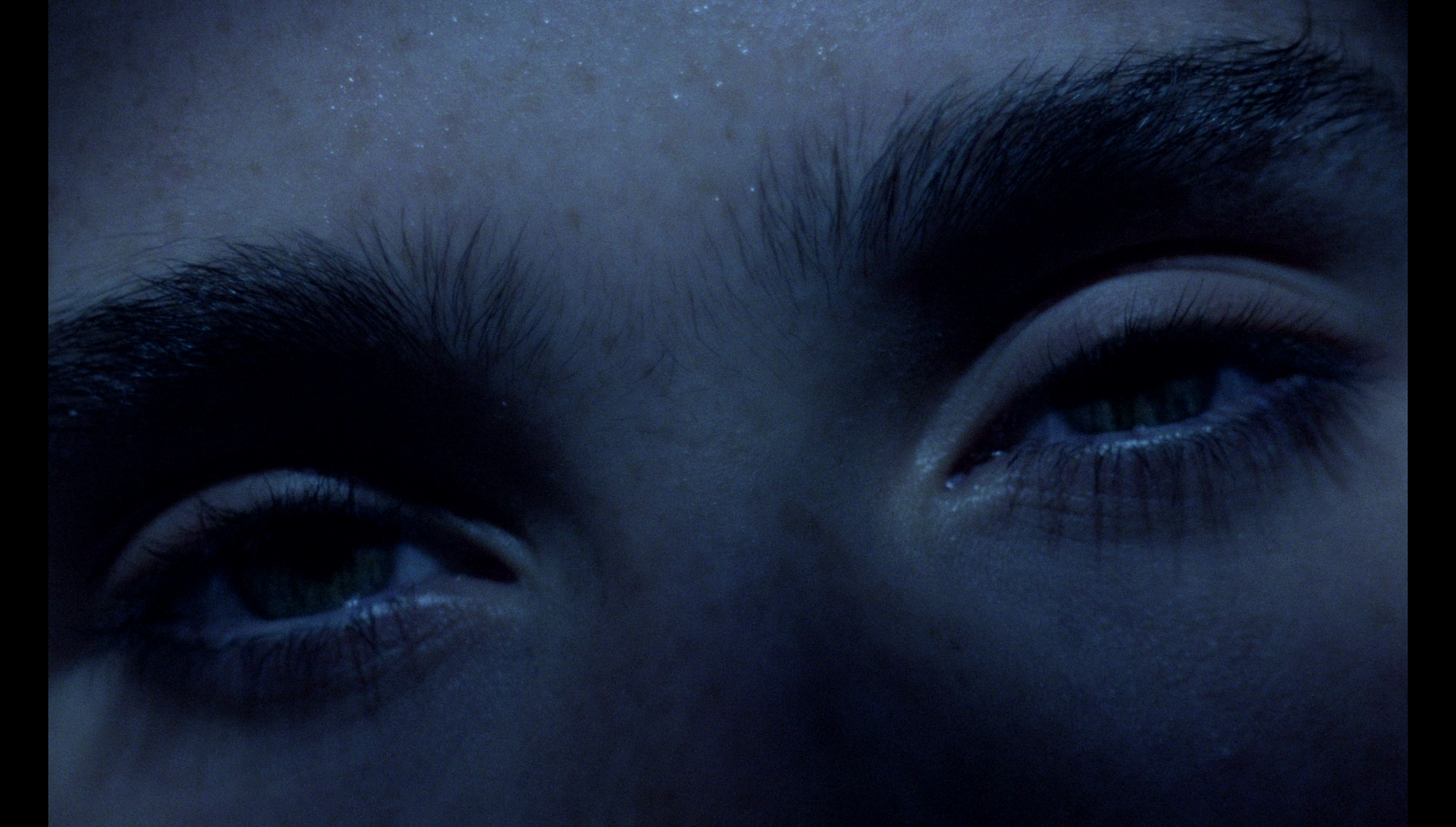 That evening, Jennifer is worried that she may sleepwalk again, and she asks Sophie to keep an eye on her. However, at night Sophie sneaks out of the school to be with her boyfriend Karl (Kaspar Capparoni). Jennifer begins to sleepwalk again, and in the grounds of the school she finds a glove filled with maggots. She also experiences a vision of Sophie, killed. That evening, Jennifer is worried that she may sleepwalk again, and she asks Sophie to keep an eye on her. However, at night Sophie sneaks out of the school to be with her boyfriend Karl (Kaspar Capparoni). Jennifer begins to sleepwalk again, and in the grounds of the school she finds a glove filled with maggots. She also experiences a vision of Sophie, killed.
Jennifer takes the glove to McGregor, who tells Jennifer that he believes she has a psychic connection with insects – something seemingly normal in the animal world. When Jennifer returns to the school after visiting McGregor, she is mocked and humiliated by the other students. However, they are soon humbled when Jennifer uses her powers to call insects to swarm the school. Exhausted, Jennifer collapses, and the headmistress vows to have Jennifer transported to a mental hospital. Jennifer escapes from the hospital and returns to McGregor’s house, where they plot to solve the murders. Reasoning that owing to the larvae of the Great Sarcophagus that he found on the killer’s glove, the killer keeps her/his victims ‘in closed distance […], conserving them’, McGregor provides Jennifer with a Great Sarcophagus fly. McGregor tells Jennifer that this fly will become agitated when it senses the presence of rotting human flesh: ‘They live exclusively off dead bodies, human remains’, McGregor tells Jennifer, ‘The destroyer, the flesh eater. It is capable of picking up the scent of a dead body over vast distances’. The fly will lead Jennifer to the location of the murderer. Jennifer takes the caged Great Sarcophagus fly on the coach route used by Vera Brandt; the fly becomes agitated, and alighting from the coach, Jennifer disovers that the fly leads her to the house where Brandt was murdered. However, Jennifer is intercepted by the estate agent (Franco Trevisi), who reveals that the house has been unoccupied for around eight months. 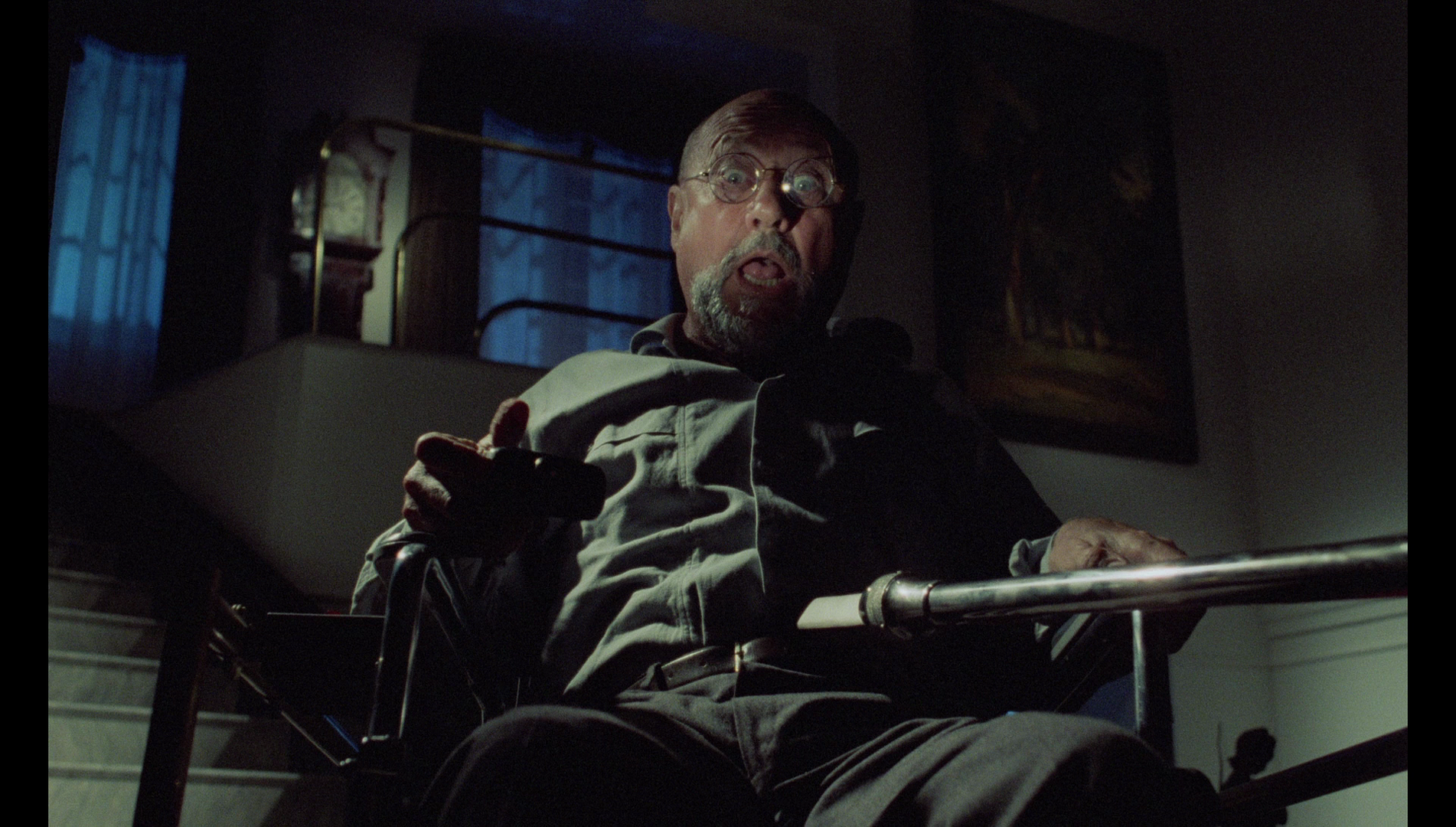 At night, an intruder enters into McGregor’s home and kills McGregor with a spear as McGregor is descending the stairs in his stair-lift. The death of McGregor is witnessed by Inge. Meanwhile, Inspector Geiger – who has been made aware of the location of the killer’s house by McGregor, prior to McGregor’s murder, investigates the house’s previous owner. Geiger discovers that she was raped by an inmate at a nearby asylum. At night, an intruder enters into McGregor’s home and kills McGregor with a spear as McGregor is descending the stairs in his stair-lift. The death of McGregor is witnessed by Inge. Meanwhile, Inspector Geiger – who has been made aware of the location of the killer’s house by McGregor, prior to McGregor’s murder, investigates the house’s previous owner. Geiger discovers that she was raped by an inmate at a nearby asylum.
Returning to the city, Jennifer is met by Frau Bruckner (Daria Nicolodi), who tells Jennifer that her father’s agent Morris Shapiro (Mario Donatone) has authorised Bruckner to buy Jennifer an air ticket home to America, but first Jennifer must spend the night in Frau Bruckner’s home. In the opening sequence, Argento uses a prowling, subjective camera to suggest Brandt is being spied on when she stumbles across the isolated house in the Swiss countryside, and later in the film Argento uses similar subjective camerawork to represent both Jennifer’s experience of sleepwalking and the perspective of the insects with whom Jennifer has a psychic connection, thus linking via the film’s photography the points-of-view of protagonist and antagonist. Tension within the film’s setpieces accumulates slowly and dramatically, exploding with violence that, when it happens, is swift and graphic: Vera Brandt’s hand being pinned to a doorframe by a large pair of scissors, for example. When Jennifer witnesses the murder of the girl during Jennifer’s sleepwalking session, the death is caused by a spear being thrust through the girl’s skull, the sharp tip protruding from the victim’s mouth. The film’s final sequence treads into the realm of the fantastic, Jennifer crawling along a tunnel underneath Frau Bruckner’s house and falling into a pit filled with the decaying remains of Bruckner’s victims; Jennifer is then chased outside by the mutant child, where she becomes engaged in the film’s final confrontation, taking place firstly in a boat on a nearby lake (which becomes consumed with flames when the petrol in the boat’s engine is set alight) and secondly, on the shore of the lake. 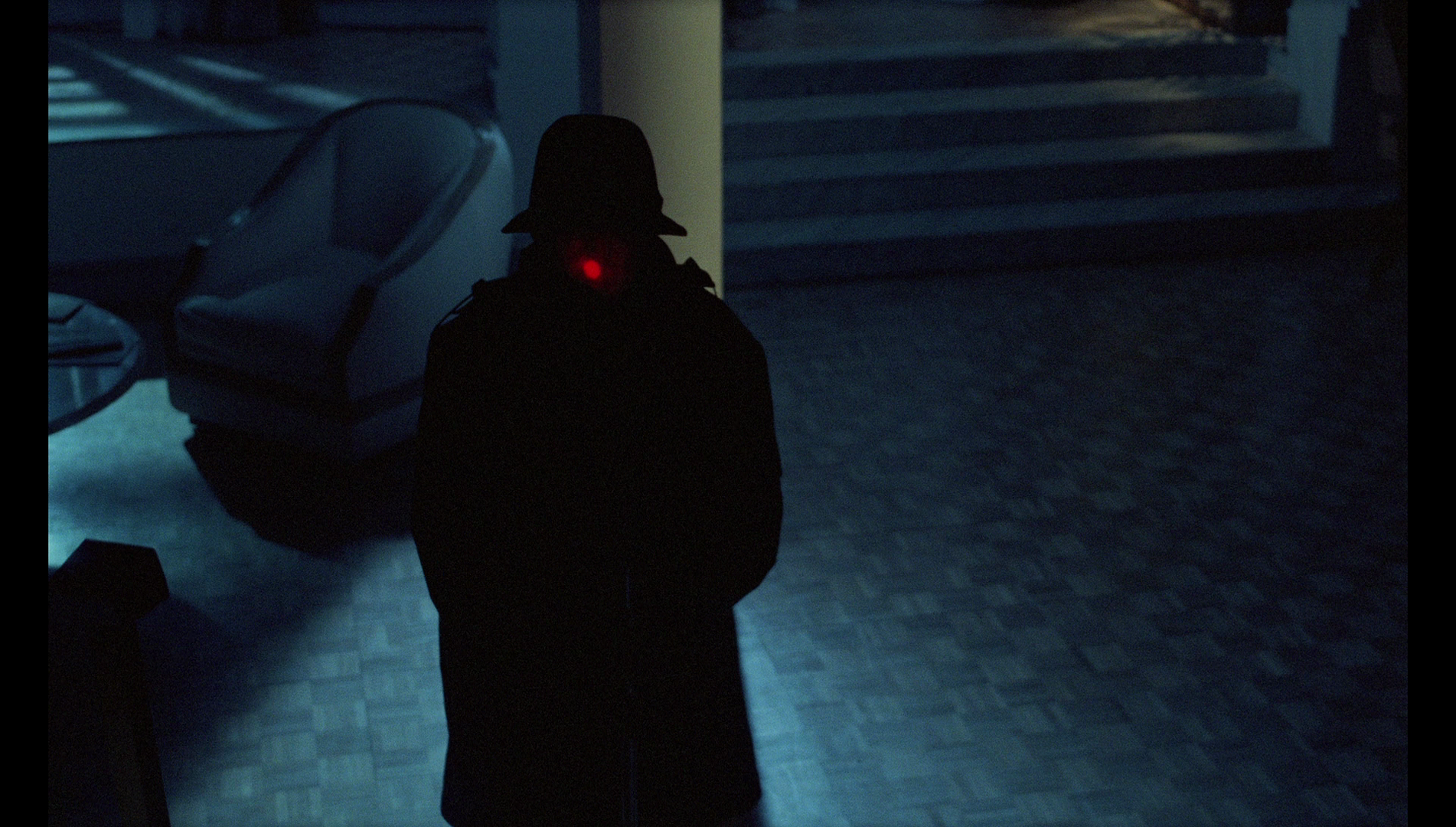 The film’s second sequence, which introduces McGregor, deftly sets the groundwork for much that follows. McGregor is shown talking to the police, who thank him for his assistance in a previous case. McGregor is revealed to be an entomologist: ‘I made the unfortunate error of becoming an expert in cadaveric fauna’, he says. (One might wonder if McGregor’s characterisation as a crime-solving entomologist had some influence on the writing of the character of Gil Grissom in the long-running series CSI: Crime Scene Investigation, 1999-2015.) McGregor explains to the detectives, and to the audience, the role insects play in the process of decay and the import this can have for solving crimes: ‘When a dead body is exposed to the elements, sooner or later it’s eaten up by insects’, McGregor says before explaining the ‘eight squadrons of death. The first that comes is the common fly. It lays its eggs on the corpse, and thus the cycle begins. The cycle takes four months’. Referring to the badly decayed severed head of Vera Brandt, McGregor reflects, ‘In the case of this head, the cycle not only seems to be complete but to have been repeated’ – the head therefore has been found eight months after the events depicted within the opening sequence. ‘After finding this, what’s the use in hiding from the facts?’, McGregor wonders, ‘There’s a killer, a vicious killer, a girl killer’. The film’s second sequence, which introduces McGregor, deftly sets the groundwork for much that follows. McGregor is shown talking to the police, who thank him for his assistance in a previous case. McGregor is revealed to be an entomologist: ‘I made the unfortunate error of becoming an expert in cadaveric fauna’, he says. (One might wonder if McGregor’s characterisation as a crime-solving entomologist had some influence on the writing of the character of Gil Grissom in the long-running series CSI: Crime Scene Investigation, 1999-2015.) McGregor explains to the detectives, and to the audience, the role insects play in the process of decay and the import this can have for solving crimes: ‘When a dead body is exposed to the elements, sooner or later it’s eaten up by insects’, McGregor says before explaining the ‘eight squadrons of death. The first that comes is the common fly. It lays its eggs on the corpse, and thus the cycle begins. The cycle takes four months’. Referring to the badly decayed severed head of Vera Brandt, McGregor reflects, ‘In the case of this head, the cycle not only seems to be complete but to have been repeated’ – the head therefore has been found eight months after the events depicted within the opening sequence. ‘After finding this, what’s the use in hiding from the facts?’, McGregor wonders, ‘There’s a killer, a vicious killer, a girl killer’.
Aside from establishing the principal threat within the film, before Jennifer has even been introduced to the audience, this sequence introduces Inge. Inge enters McGregor’s study carrying a scalpel. McGregor chastens Inge, as a parent might chasten a child who has unintentionally picked up a deadly plaything: McGregor uses the scalpel to cut a piece of paper, telling the chimp that it’s not a toy: ‘I don’t want you ever, ever playing with this again’, he warns Inge, who he introduces to the detectives as ‘my nurse’. At the end of the film, after McGregor has been killed, Inge wanders hopelessly until she finds a bin in which she discovers another sharp bladed object, the straight razor that she carries into the film’s closing sequence, the chimp’s deadly use of the straight razor at the end of the film echoing her playful handling of the scalpel at the start. McGregor also introduces the laser that he uses to point at objects, thus enabling Inge to retrieve them for him. ‘If I pick out smething with my laser, she never forgets it’, McGregor says. When, later in the film, McGregor is killed by his assailant, he shines the laser on the killer’s face; the red beam illuminates only the killer’s eye, but for Inge, who witnesses the murder before nursing her dead friend, this is the only clue she needs as to the identity of the killer. 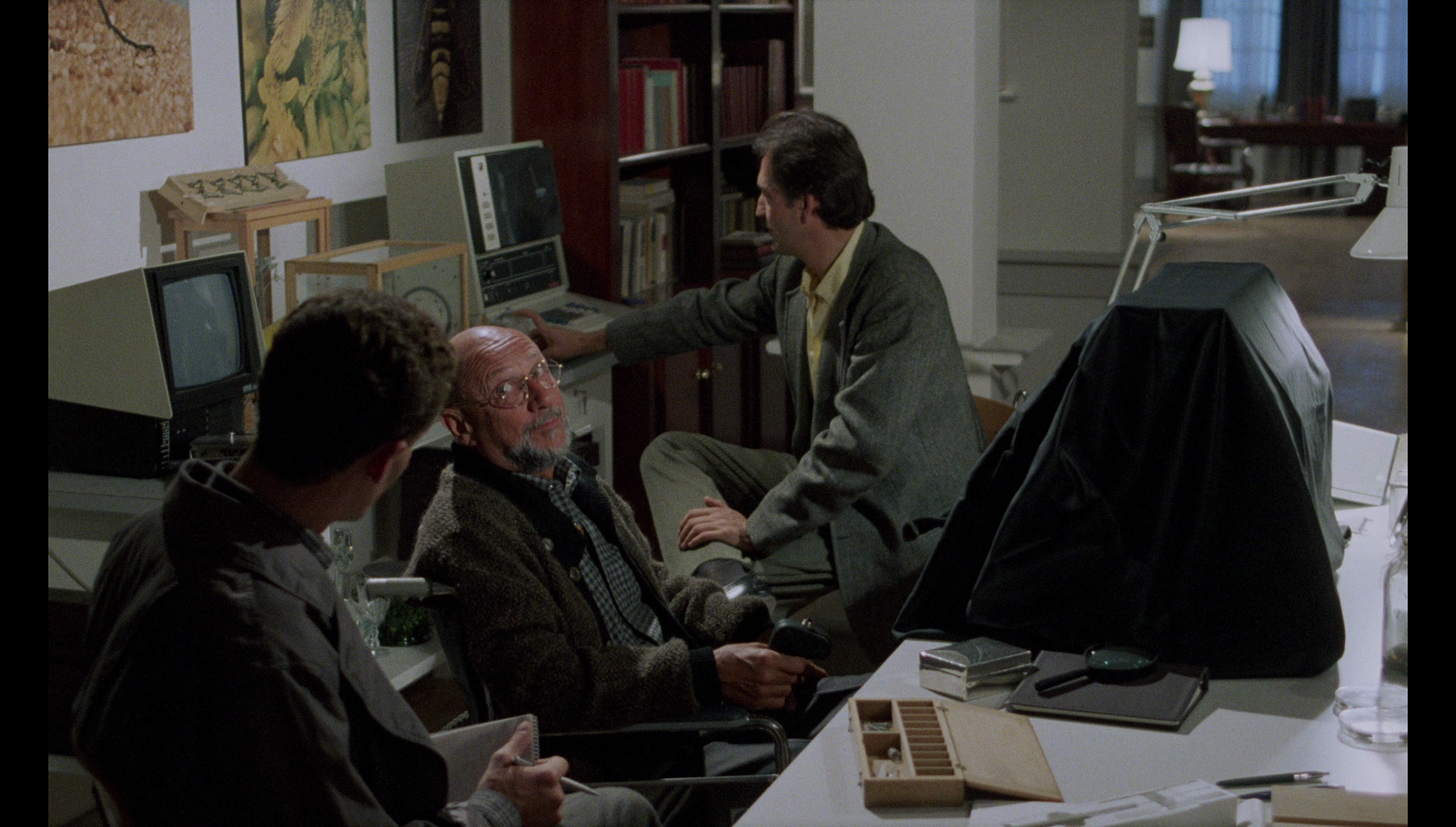 Argento’s films frequently frame law enforcement officials as bumbling and inadequate. Phenomena is to some extent no exception to this. Made at the end of the era of the spate of unsolved murders committed by the so-called ‘Monster of Florence’ (itself the subject of two films made in 1985/6, Cesare Ferrario’s Il mostro di Firenze/Night Ripper and Camillo Teti’s L'assassino è ancora tra noi/The Killer Is Still Among Us), Phenomena ironically anticipated a later suggestion (in 2004, following the reopening of the unsolved Monster of Florence case in 2001) by an entomologist that, owing to the development of the larvae on the corpses of two French tourists killed in the Monster of Florence’s murder spree in 1985 (the last recorded victims of the serial killer), the victims could not have been dead for more than 36 hours – thus disproving a popular theory that the Monster of Florence was in fact a group of people, a sect of Satanists who were alleged to meet at a certain specific villa in Chianti. In Phenomena, the police are first shown at the home of entomologist John McGregor, praising his work on a previous case. Later, acting on the evidence provided to him by McGregor and Jennifer, Inspector Geiger visits the isolated house in the Swiss Alps where the Danish student was attacked in the film’s opening sequence, and this leads him to Frau Bruckner’s home. However, Geiger allows himself to be overpowered by this unassuming, mousey woman, winding up chained to the wall in the dungeon of horrors that sit beneath her house. As Ellen Nerenberg has stated, ‘Argento’s film illustrate in multiple settings the failure of standard methods of police investigation, recalling how the Florence press corps and law enforcement agencies were flummoxed by the extreme novelty of the “Monster’s” serial murders [….] [I]n Argento’s cinema, agents of the police are routinely depicted as imbeciles unable to solve violent crimes’ (Nerenberg, 2012: 75). Argento’s films frequently frame law enforcement officials as bumbling and inadequate. Phenomena is to some extent no exception to this. Made at the end of the era of the spate of unsolved murders committed by the so-called ‘Monster of Florence’ (itself the subject of two films made in 1985/6, Cesare Ferrario’s Il mostro di Firenze/Night Ripper and Camillo Teti’s L'assassino è ancora tra noi/The Killer Is Still Among Us), Phenomena ironically anticipated a later suggestion (in 2004, following the reopening of the unsolved Monster of Florence case in 2001) by an entomologist that, owing to the development of the larvae on the corpses of two French tourists killed in the Monster of Florence’s murder spree in 1985 (the last recorded victims of the serial killer), the victims could not have been dead for more than 36 hours – thus disproving a popular theory that the Monster of Florence was in fact a group of people, a sect of Satanists who were alleged to meet at a certain specific villa in Chianti. In Phenomena, the police are first shown at the home of entomologist John McGregor, praising his work on a previous case. Later, acting on the evidence provided to him by McGregor and Jennifer, Inspector Geiger visits the isolated house in the Swiss Alps where the Danish student was attacked in the film’s opening sequence, and this leads him to Frau Bruckner’s home. However, Geiger allows himself to be overpowered by this unassuming, mousey woman, winding up chained to the wall in the dungeon of horrors that sit beneath her house. As Ellen Nerenberg has stated, ‘Argento’s film illustrate in multiple settings the failure of standard methods of police investigation, recalling how the Florence press corps and law enforcement agencies were flummoxed by the extreme novelty of the “Monster’s” serial murders [….] [I]n Argento’s cinema, agents of the police are routinely depicted as imbeciles unable to solve violent crimes’ (Nerenberg, 2012: 75).
Phenomena was one of a number of 1980s Italian horror films that foregrounded animals and our relationships with them. The most aggressive exploitation of this theme was in pictures like Franco Prosperi’s Belvi feroci (Wild Beasts, 1984), a film in which zoo animals that have ingested PCP rampage through the streets of a city. To some extent, in its depiction of insects that swarm on command against those attacking Jennifer, and the chimp Inge, who arrives on the scene wielding a straight razor to avenge her master’s death, Phenomena has something in common with films about animals rebelling against human society – including Belve feroci and more mainstream 1970s American pictures such as Steven Spielberg’s Jaws (1975) and Joe Dante’s Piranha (1978). In Phenomena, Argento uses the photography to give the insects a high degree of agency/subjectivity, via presenting a number of shots from the point-of-view of the insects within the film – much like, a few years earlier, Lucio Fulci presented point-of-view shots from the prowling cat’s perspective in the opening titles sequence for Il gatto nero (The Black Cat, 1981). Phenomena’s image of a chimp wielding a straight razor, utilised memorably on Palace Video’s VHS art for the film, seemed to be something within the zeitgeist; similar imagery appeared the following year in Richard Franklin’s Link (1986) and George A Romero’s Monkey Shines (1988). 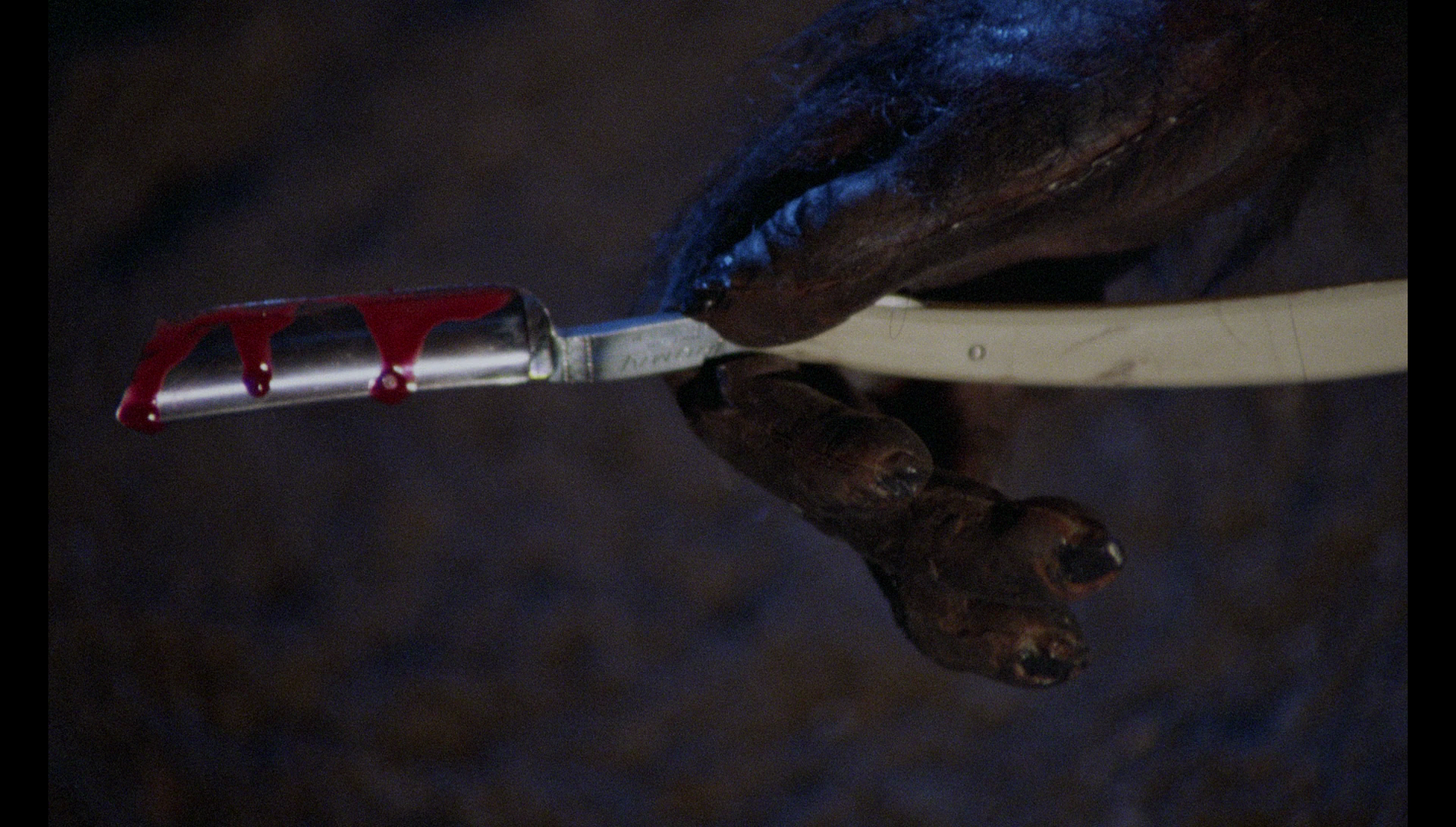 Like Monkey Shines, Phenomena has some supernatural or paranormal elements – most obviously, Jennifer’s ability to communicate telepathically with insects, with McGregor explaining this as being connected to what he suggests are the ‘documented’ ESP-like capabilities of the insect world. McGregor begins his discussion of ESP in insects by telling Jennifer that in Ancient Greece, the butterfly and the human psyche were linked by very similar names. ‘What is this connection between insects and the human soul?’, McGregor asks, ‘Perhaps because of the multifarious mystery of them both’. McGregor continues by suggesting that ‘extrasensory perception [ESP] and paranormal powers that are unusual in humans are perfectly natural in insects’. He tells Jennifer that insects communicate ‘over vast distances by telepathy’, and that ‘It’s perfectly normal for insects to be slightly telepathic’. ‘It’s normal for insects, but am I normal?’, Jennifer wonders. Jennifer’s powers, and her belief in them, cause her to be mocked by her fellow students and treated as a deviant by the school’s authoritarian headmistress. ‘She’s diabolic’, the headmistress asserts, ‘Look at her, the Lady of the Flies’. Like Monkey Shines, Phenomena has some supernatural or paranormal elements – most obviously, Jennifer’s ability to communicate telepathically with insects, with McGregor explaining this as being connected to what he suggests are the ‘documented’ ESP-like capabilities of the insect world. McGregor begins his discussion of ESP in insects by telling Jennifer that in Ancient Greece, the butterfly and the human psyche were linked by very similar names. ‘What is this connection between insects and the human soul?’, McGregor asks, ‘Perhaps because of the multifarious mystery of them both’. McGregor continues by suggesting that ‘extrasensory perception [ESP] and paranormal powers that are unusual in humans are perfectly natural in insects’. He tells Jennifer that insects communicate ‘over vast distances by telepathy’, and that ‘It’s perfectly normal for insects to be slightly telepathic’. ‘It’s normal for insects, but am I normal?’, Jennifer wonders. Jennifer’s powers, and her belief in them, cause her to be mocked by her fellow students and treated as a deviant by the school’s authoritarian headmistress. ‘She’s diabolic’, the headmistress asserts, ‘Look at her, the Lady of the Flies’.
The giallo all’italiana/Italian-style thriller was, in its early years, characterised by stories of detection in which supernatural elements were sometimes introduced but predominantly undercut via a rational explanation of events. However, increasingly during the 1970s Italian thrillers came to feature supernatural/horror-themed elements: for example, the references to sunspots being a causative factor in a spate of apparent suicides, in Armando Crispino’s Macchie solari (Autopsy, 1975). Owing to its relatively high profile and memorable setpieces, Argento’s Suspiria (1977) was during the late 1970s and throughout the 1980s the entry point for many English-speaking fans into the world of the thrilling all’italiana, but in its foregrounding of supernatural elements this film is quite atypical of the wider characteristics of Italian-style thrillers. In the context of Argento’s films, Suspira’s more outrageous supernatural features were to some extent a logical continuation of the Psycho-like cod-psychological explanation offered for the killer’s motives in L’uccello dalle piume di cristallo (The Bird with the Crystal Plumage, 1970), the discredited science of Il gatto a nove code (The Cat O’Nine Tails, 1971, in which the killer’s behaviour is explained as the product of a chromosomal imbalance) and the pseudo-science of Quattro mosche di velluto grigio (Four Flies on Grey Velvet, 1971, with its suggestion that the last image witnessed before death is recorded on the retina and can be photographed). Argento’s later films would amplify this focus on the supernatural/paranormal (for example, in the opening séance sequence of Trauma, 1993). In 1986, Kim Newman coined the phrase giallo-fantastico to refer to that peculiar subset of Italian-style thrillers that emphasised paranormal/fantastical elements (Newman, cited in Koven, 2006: 9). In retrospect, Phenomena sits between Argento’s more naturalistic thrillers and his more bizarre and outrageous examples of fantasy/horror cinema; Mikel Koven highlights the fact that Phenomena, despite its focus on ESP/telepathy, conforms to the dominant narrative paradigms of the giallo all’italiana in its focus on a series of crimes that are solved by an amateur sleuth (Jennifer) (ibid.: 10). 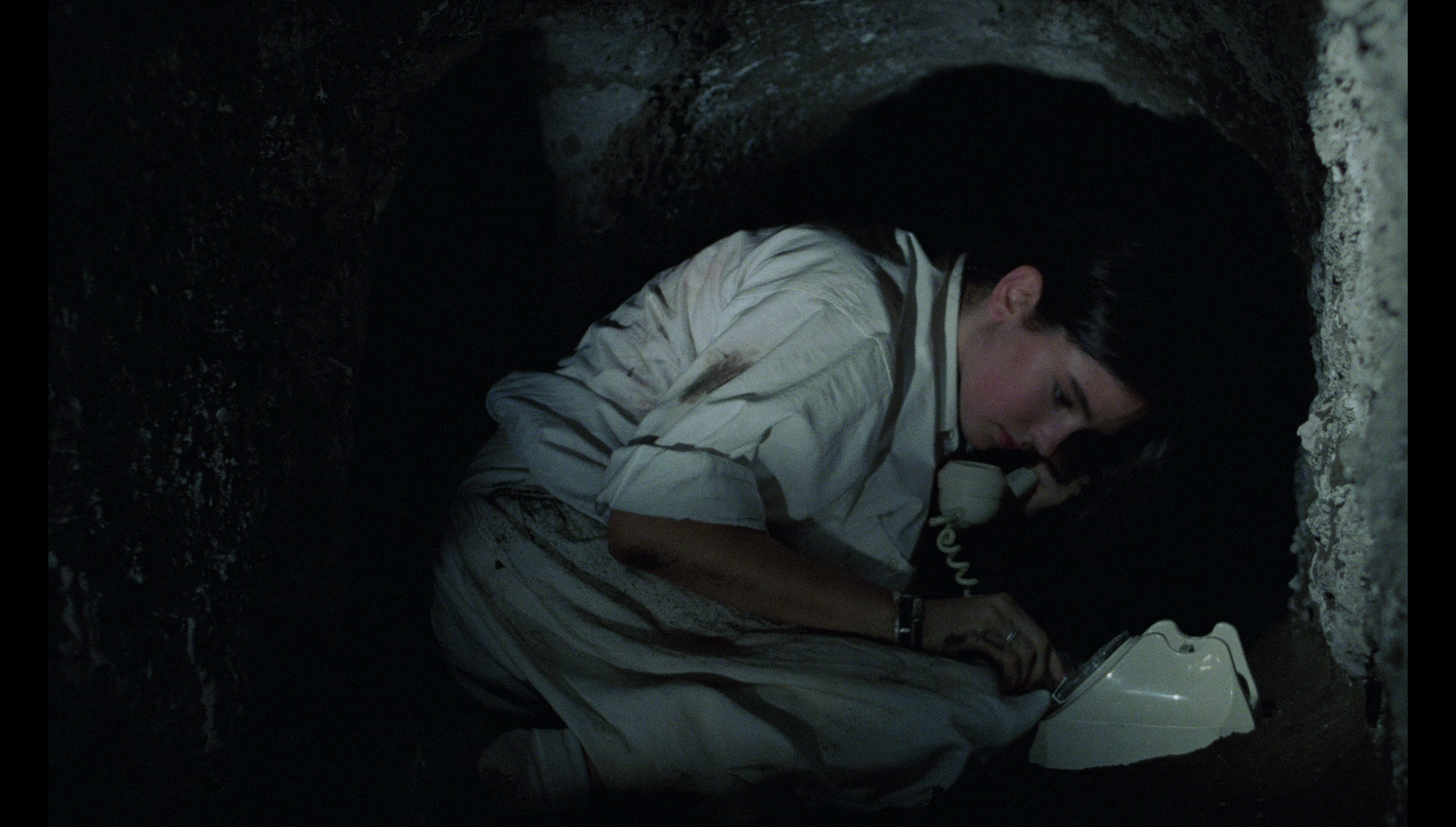 Likewise, many 1980s Italian horror films (such as Lamberto Bava’s La casa dell’orco/The Ogre, 1988) incorporated a ‘fairy tale’ dimension or references to children’s literature. (Jennifer’s journey into Frau Bruckner’s dungeon-like pit of horrors takes her along a winding tunnel dug beneath Bruckner’s house, a very direct allusion to Lewis Carroll’s Alice’s Adventures in Wonderland and its protagonist’s journey down the rabbit hole.) Like a traditional fairy tale, Phenomena begins with a young girl transgressing a social boundary, breaking a prohibition: like Little Red Cap disobeying her mother’s warning not to stray from the path through the woods, Vera Brandt precipitates the events which form the core of Phenomena’s narrative by inviting herself into Frau Bruckner’s isolated house, wandering into a place where she is uninvited and thereby placing herself in danger. Argento’s films are filled with similar scenarios: Marc Daly (David Hemmings) exploring the abandoned villa in Profondo rosso (Deep Red, 1975); Sara (Stefania Casini) wandering through the ballet school at night in Suspiria, only to meet her doom in a room filled with barbed wire; Rose Elliot exploring the flooded room in the opening sequence of Inferno (1980). As in Vladimir Propp’s work on folk tales, the story of Phenomena is set in motion by the violation of an interdiction. Likewise, the Great Sarcophagus fly that McGregor gives Jennifer, helping them to find the location where Vera Brandt was murdered, is explicitly referenced in the film’s dialogue as the traditional ‘magic agent’ of folk tales: ‘That fly is your magic wand’, McGregor tells Jennifer. As in Suspiria, the use of an omniscient, extradiegetic narrator emphasises the film’s relationship with the folk tale: ‘And so Jennifer arrives in Switzerland’, the narrator (in the Italian version, Dario Argento himself) says as Jennifer’s taxi pulls up at the school, ‘to pass her first night at the Richard Wagner International School for Girls’. The Italian version of Opera ends with similar narration in the third person, though in the English language version of that film the closing narration is presented in the first person by Betty (Cristina Marsillach). Likewise, many 1980s Italian horror films (such as Lamberto Bava’s La casa dell’orco/The Ogre, 1988) incorporated a ‘fairy tale’ dimension or references to children’s literature. (Jennifer’s journey into Frau Bruckner’s dungeon-like pit of horrors takes her along a winding tunnel dug beneath Bruckner’s house, a very direct allusion to Lewis Carroll’s Alice’s Adventures in Wonderland and its protagonist’s journey down the rabbit hole.) Like a traditional fairy tale, Phenomena begins with a young girl transgressing a social boundary, breaking a prohibition: like Little Red Cap disobeying her mother’s warning not to stray from the path through the woods, Vera Brandt precipitates the events which form the core of Phenomena’s narrative by inviting herself into Frau Bruckner’s isolated house, wandering into a place where she is uninvited and thereby placing herself in danger. Argento’s films are filled with similar scenarios: Marc Daly (David Hemmings) exploring the abandoned villa in Profondo rosso (Deep Red, 1975); Sara (Stefania Casini) wandering through the ballet school at night in Suspiria, only to meet her doom in a room filled with barbed wire; Rose Elliot exploring the flooded room in the opening sequence of Inferno (1980). As in Vladimir Propp’s work on folk tales, the story of Phenomena is set in motion by the violation of an interdiction. Likewise, the Great Sarcophagus fly that McGregor gives Jennifer, helping them to find the location where Vera Brandt was murdered, is explicitly referenced in the film’s dialogue as the traditional ‘magic agent’ of folk tales: ‘That fly is your magic wand’, McGregor tells Jennifer. As in Suspiria, the use of an omniscient, extradiegetic narrator emphasises the film’s relationship with the folk tale: ‘And so Jennifer arrives in Switzerland’, the narrator (in the Italian version, Dario Argento himself) says as Jennifer’s taxi pulls up at the school, ‘to pass her first night at the Richard Wagner International School for Girls’. The Italian version of Opera ends with similar narration in the third person, though in the English language version of that film the closing narration is presented in the first person by Betty (Cristina Marsillach).
Another popular element within 1980s Italian horror cinema was the focus on physical deformity as an index of deviance in pictures such as Giuliano Carnimeo’s Quella villa in fondo al parco (Rat Man, 1988), and especially in films which feature a pairing of a corrupt parent and a ‘deviant’ child. This theme bubbles within Andrea Bianchi’s La notti del terrore (Nights of Terror, 1981), in the quasi-incestuous relationship between Evelyn (Mariangela Giordano) and her creepy son Michael (Pietro Barzocchini/Peter Bark), and in the relationship between taxidermist-murderer Frank (Kieran Canter) and his motherly housemaid Iris (Franca Stoppi) in Joe D’Amato’s Buio Omega (Blue Holocaust/Beyond the Darkness, 1979). With Frau Bruckner’s deformed child being the product of a rape by an inmate in the mental asylum, Phenomena is no exception: Frau Bruckner is the archetypal ‘bad mother’ of traditional folk tales. The overprotective mother becomes a symbol of the ‘monstrous feminine’: in psychoanalytic theory, the ‘bad mother’ may be rejecting of the child or overprotective, ‘mirror images and equally malevolent’ (Ehrenreich & English, 1978: 205). Bruckner, the mother of a child conceived after she was raped by a violent mental patient (‘He pulled me to him though the bars. There were bars between us’, she says), is both overprotective and rejecting of her offspring – overprotective in the sense that she covers up his murders, and rejecting in the fact that she locks the child away within her house and doesn’t seem to engage with him at all.  The ‘bad mother’ is a narrative paradigm that has filtered its way into modern popular culture by its repetition in children’s films such as Disney’s animated versions of these folk tales (for example, Snow White and the Seven Dwarfs, 1937). These ‘bad mothers’ have been explained as attempts to make horror more recognisable to the predominantly young audience for fairy tales, via the depiction of one of the most important figures in a child’s life (her/his mother) as a corrupt, wicked figure; alternatively, the archetype of the ‘bad mother’ has been framed as a patriarchal concept which is intended to establish a cultural paradigm by which women may be judged and punished. A clearly disturbed woman who is nevertheless able to maintain a ‘respectable’ façade, Frau Bruckner covers up the murders committed by her mutant son, in a similar manner to which in Buio Omega, Iris (Frank’s mother figure) helps Frank conceal his murders. ‘I have a small son who is very sick’, Frau Bruckner confesses to Jennifer near the climax of the film, ‘Sometimes I think that he’s driving me crazy’. ‘I’m sorry’, Jennifer says. ‘These are things that can happen in a woman’s life’, Bruckner responds matter-of-factly. The ‘bad mother’ is a narrative paradigm that has filtered its way into modern popular culture by its repetition in children’s films such as Disney’s animated versions of these folk tales (for example, Snow White and the Seven Dwarfs, 1937). These ‘bad mothers’ have been explained as attempts to make horror more recognisable to the predominantly young audience for fairy tales, via the depiction of one of the most important figures in a child’s life (her/his mother) as a corrupt, wicked figure; alternatively, the archetype of the ‘bad mother’ has been framed as a patriarchal concept which is intended to establish a cultural paradigm by which women may be judged and punished. A clearly disturbed woman who is nevertheless able to maintain a ‘respectable’ façade, Frau Bruckner covers up the murders committed by her mutant son, in a similar manner to which in Buio Omega, Iris (Frank’s mother figure) helps Frank conceal his murders. ‘I have a small son who is very sick’, Frau Bruckner confesses to Jennifer near the climax of the film, ‘Sometimes I think that he’s driving me crazy’. ‘I’m sorry’, Jennifer says. ‘These are things that can happen in a woman’s life’, Bruckner responds matter-of-factly.
Like all of Argento’s films, Phenomena makes strong symbolic use of the story-spaces depicted within the narrative: the isolated cottage where Vere Brandt meets her fate; the ultramodern house in which McGregor lives; the school, which the dialogue in the film states is built on the estate on which Richard Wagner lived during his time in exile. As Jennifer rides in the taxi to the school at the start of the film, Frau Bruckner tells Jennifer that the area is referred to as ‘the Swiss Transylvania’: ‘It’s a very unusual area’, Bruckner says. Later, we learn that this has something to do with the föhn winds, the strong winds that blow on the downwind side of the Alps and which have a drying and warming effect but which are also known to cause avalanches and flooding. ‘Föhnkrankenheit’, or ‘Föhn sickness’, is an element of folklore in the areas near the Alps, with locals believing that these peculiar winds have some correlation with various mental and physical disorders, including depression, migraines and insomnia – and that the appearance of the föhn winds results in suicides and spikes in criminal behaviour. ‘Some people get headaches’, McGregor says in reference to the föhn, ‘When it blows, there are those who say it causes madness. This is a strange part of the country, the Swiss Transylvania’. The theme of insanity is amplified by the sequence in which Geiger investigates the insane asylum where Bruckner was raped and where her murderous, mutant child was conceived. Geiger is escorted through the asylum by a doctor, who tells the detective that ‘The further down in this place you go, the more monstrous the inmates are. Probably the same in hell’. ‘Until you reach the one at the bottom, the one without a centre’, Geiger says in response.
Video
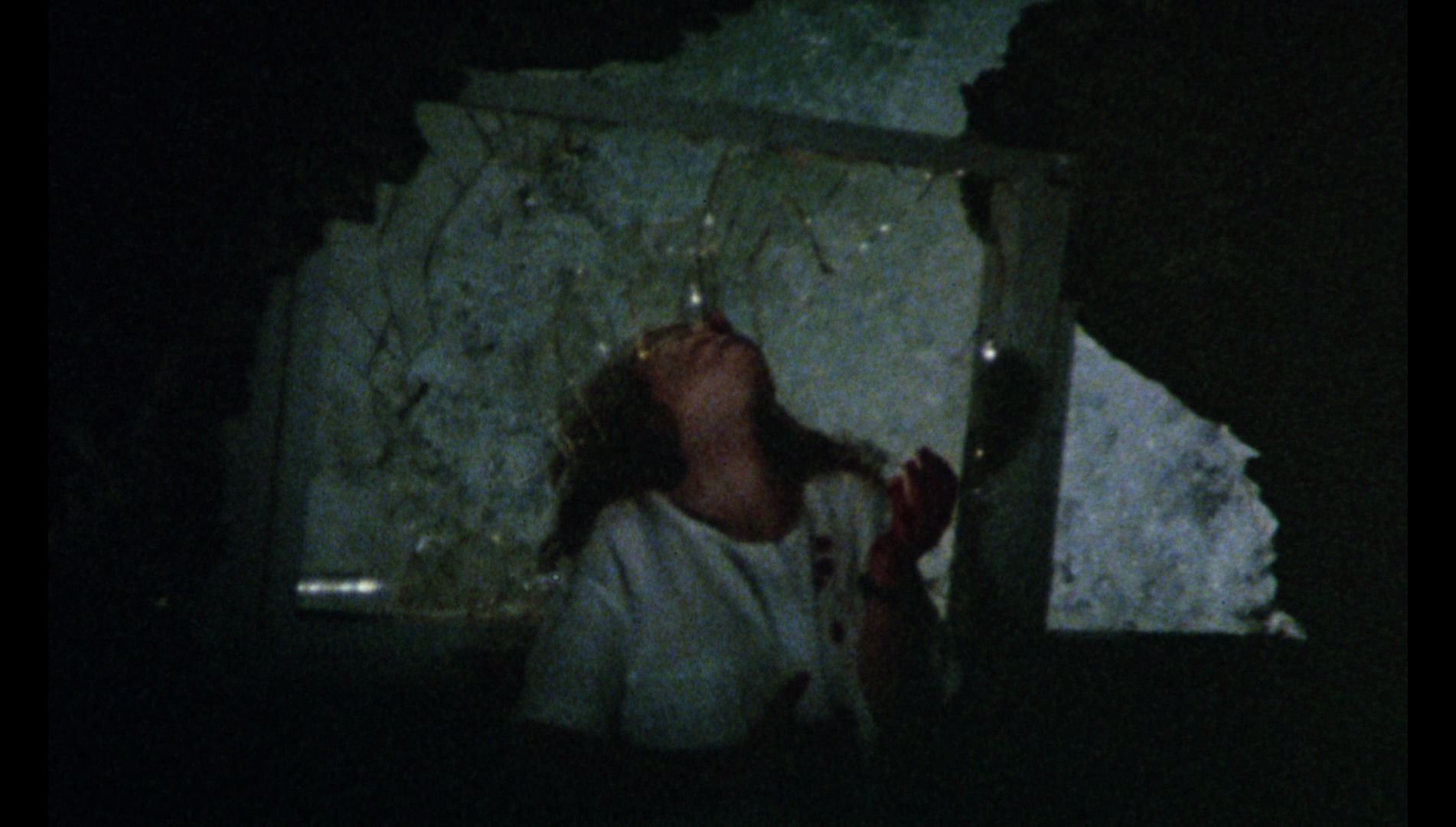 This release of Phenomena contains three cuts of the film: the 115:53 minute ‘integral’ version; the 110:06 ‘international’ version; and the 83:03 minute Creepers cut. All three versions are housed on separate discs and based on the same source (a new 4k restoration of the original camera negative). This release of Phenomena contains three cuts of the film: the 115:53 minute ‘integral’ version; the 110:06 ‘international’ version; and the 83:03 minute Creepers cut. All three versions are housed on separate discs and based on the same source (a new 4k restoration of the original camera negative).
A detailed comparison of the 110 minute version with the much shorter Creepers edit can be found at the following link: http://www.movie-censorship.com/report.php?ID=687204. The differences between the 116 minute ‘integral’ cut and the 110 minute version are more subtle and amount to some extended shots throughout the film, often amounting to no more than a few added in numerous places, and the following scene extensions that feature additional dialogue that, in the presentation of the ‘integral’ cut, is presented in Italian with (optional) English subtitles: (i) in the scene in which Jennifer and Frau Bruckner approach the school in a taxi and Bruckner is startled by the wasp/bee (depending on whether one is watching the Italian or English version), Jennifer chastises Bruckner for striking out at the insect; (ii) when Jennifer is found after her first sleepwaking episode by the two local boys, some additional dialogue is present; (iii) an extension of the scene in which Jennifer calls Morris after being subjected to the EEG; (iv) some new dialogue when Jennifer visits McGregor after finding the glove; (v) some additional dialogue on the coach as Jennifer carries the Great Sarcophagus fly and a fellow passenger asks Jennifer to close the window, to which Jennifer responds quite aggressively; (vi) Jennifer’s angry response and Bruckner’s reaction to this, in the scene in which Bruckner insists Jennifer take two pills; (vii) Bruckner preventing Jennifer from telephoning Morris after the incident with the pills, and Bruckner assaulting Jennifer. The differences are minor, but arguably the added dialogue makes Jennifer seem a little more brattish and argumentative, willing to shout down authority figures (especially female authority figures). Her sharp putdown of the middle-aged woman on the coach is a notable example of this. 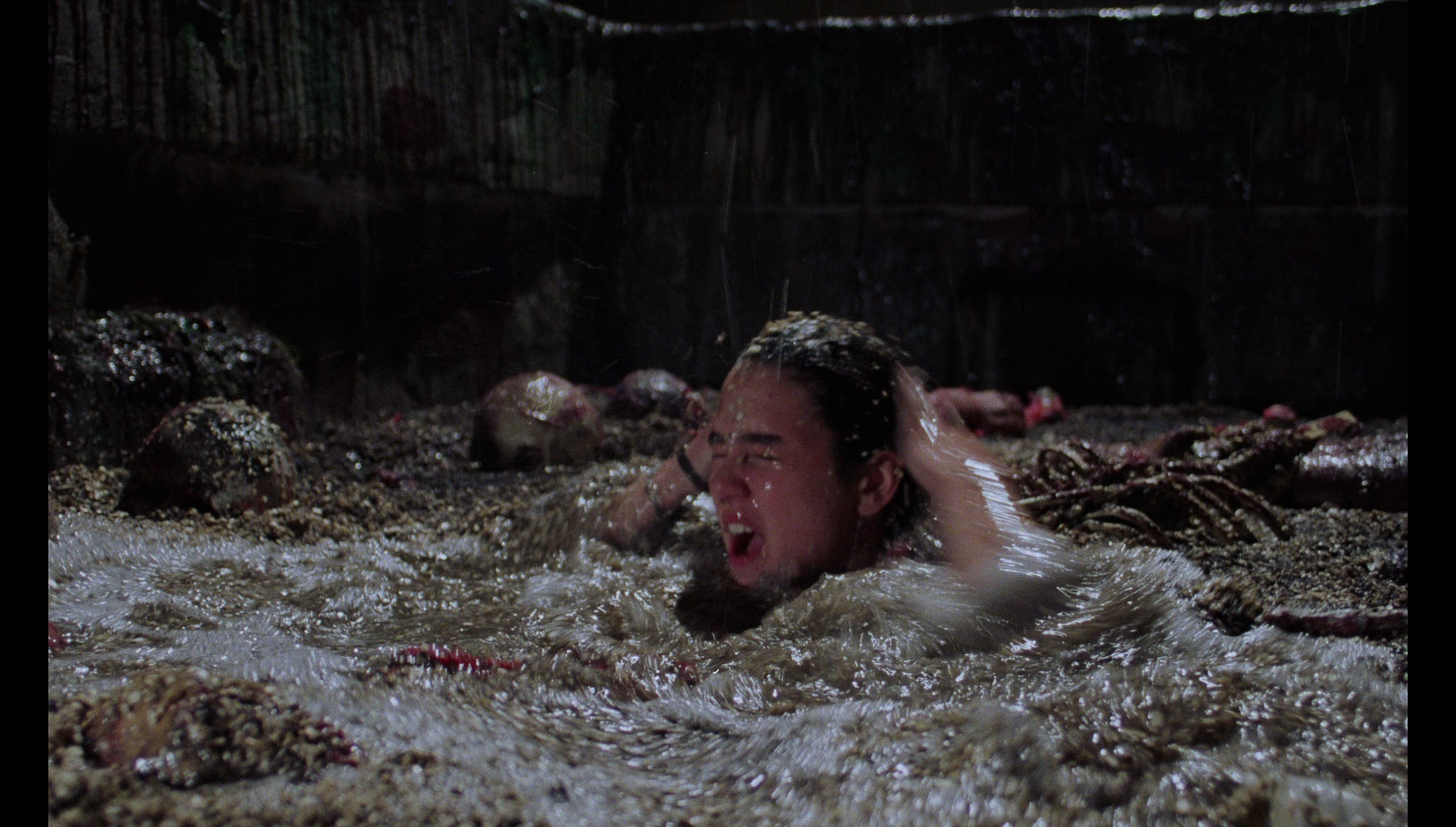 The film contains some remarkable photography, interiors often being shot with wide-angle lenses to emphasise and distort the sense of space within them. When Vera is killed near the waterfall, Argento shows her headless corpse being dragged away by her unseen assailant, this image being presented via a reflection in a pool of water. Notable too is Argento’s use of extreme high-speed photography to show Vera Brandt’s head smashing through a window, the glass collapsing across her face; this shot is comparable to the slow-motion decapitation seen at the climax of Quattro mosche di velluto grigio, and the shot itself is in this presentation as rough-looking as ever: the coarseness of its structure is a product of the slow-motion process and the sequence being shot in low-light. (Judging by the grain structure and contrast, this shot actually looks as if it’s been ‘pushed’ here, or some sort of compensation applied for underexposure.) The film contains some remarkable photography, interiors often being shot with wide-angle lenses to emphasise and distort the sense of space within them. When Vera is killed near the waterfall, Argento shows her headless corpse being dragged away by her unseen assailant, this image being presented via a reflection in a pool of water. Notable too is Argento’s use of extreme high-speed photography to show Vera Brandt’s head smashing through a window, the glass collapsing across her face; this shot is comparable to the slow-motion decapitation seen at the climax of Quattro mosche di velluto grigio, and the shot itself is in this presentation as rough-looking as ever: the coarseness of its structure is a product of the slow-motion process and the sequence being shot in low-light. (Judging by the grain structure and contrast, this shot actually looks as if it’s been ‘pushed’ here, or some sort of compensation applied for underexposure.)
On the whole, In comparison with Arrow’s previous Blu-ray release, this new presentation opens up the framing slightly and features a much greater level of fine detail. It’s also a little ‘cooler’, with a less saturated palette and more naturalistic skin tones. Throughout the film, there is an impressive level of detail present, as can be seen in the texture of the foliage in the film’s opening shot. Strong encodes across all three discs ensure that the presentations of all three cuts of the film retain the structure of 35mm film. There is no overt damage to speak of, and no evidence of harmful digital tinkering. Contrast levels are superb: midtones are extremely rich, even in the many low-light sequences, blacks are deep and highlights are balanced – for example, gradation can be seen in the sky within the film’s opening shot (which on the film’s DVD releases was often almost white and without gradation). All three presentations are excellent and clear improvements on Arrow’s previous Blu-ray release of this title.  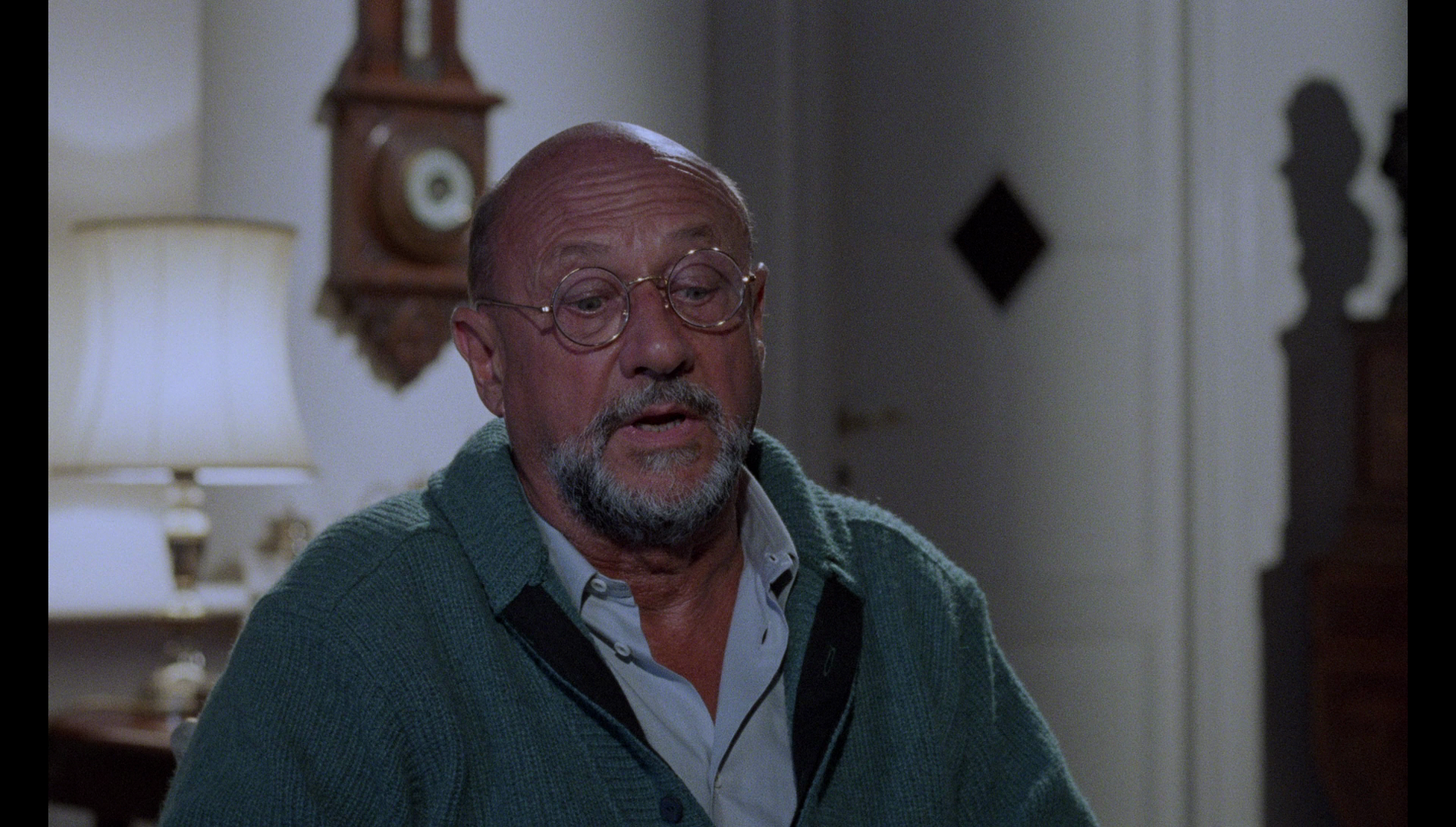 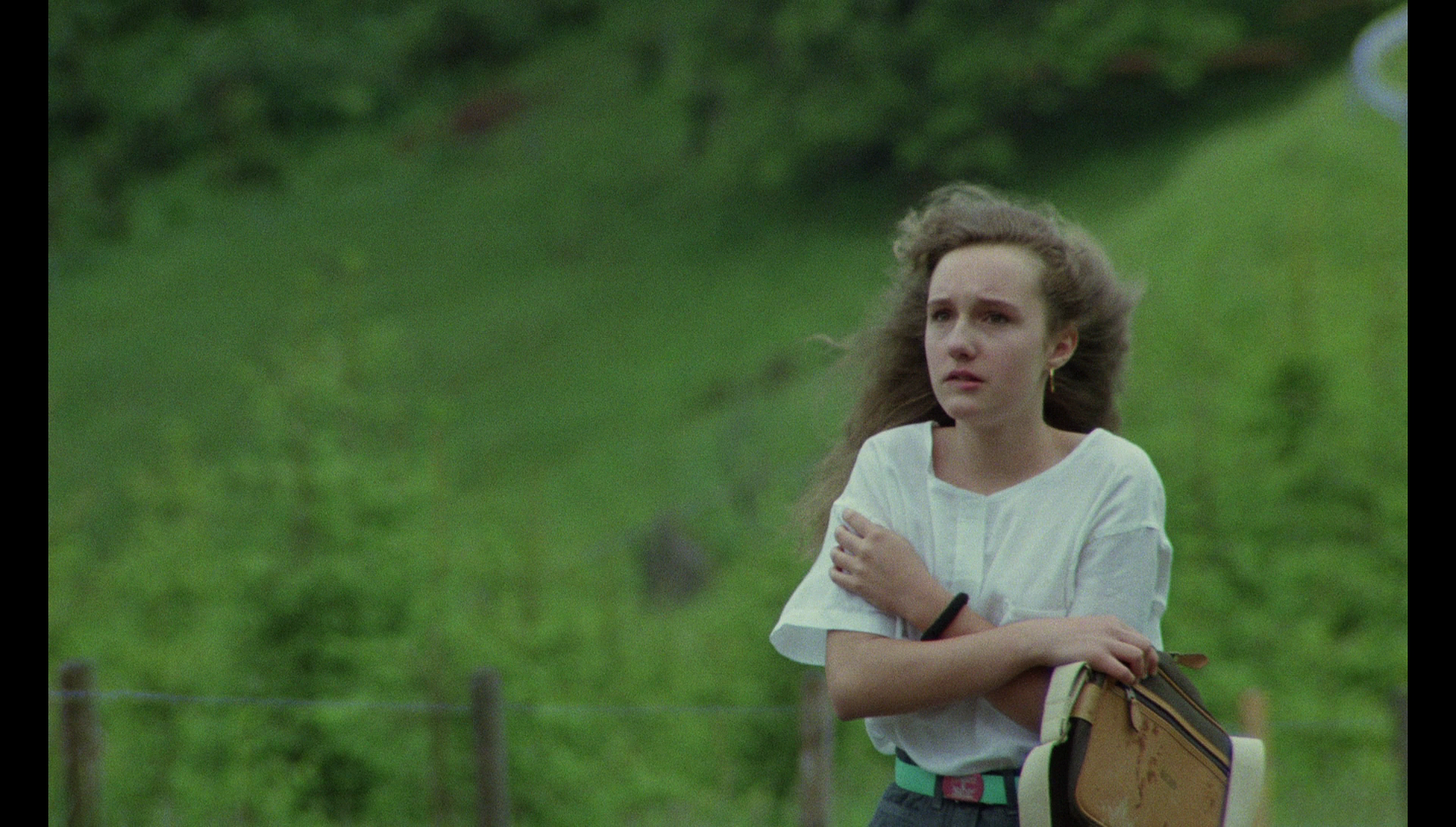
Audio
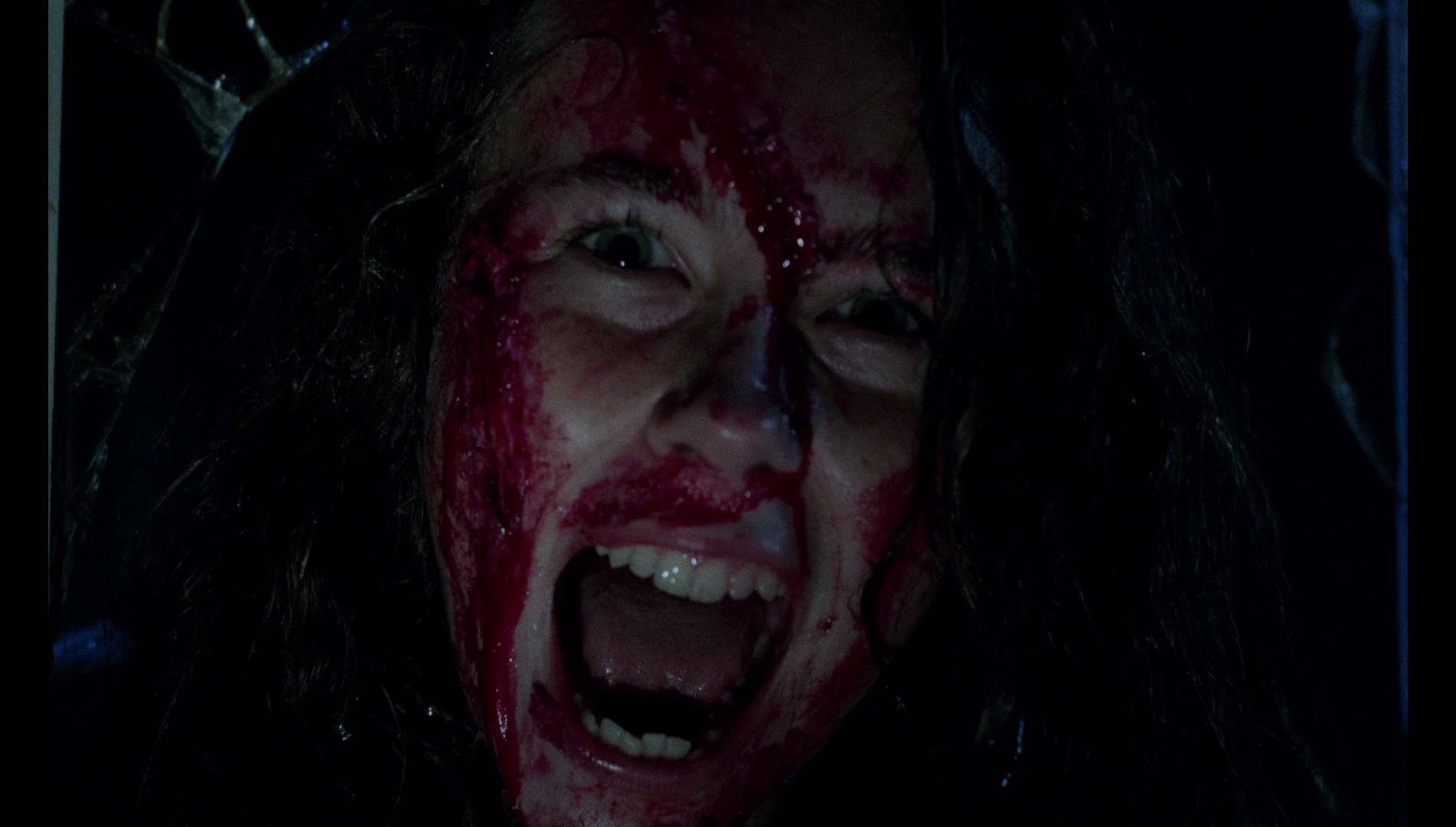 On the disc containing the 116 minute ‘integral’ cut, the viewer is presented with the following audio options: (i) Italian LPCM 2.0 stereo; (ii) Italian DTS-HD MA 5.1; (iii) English LPCM 2.0 stereo, with additional dialogue never dubbed into English presented in Italian with subtitles; and (iv) English DTS-HD MA 5.1, again with additional dialogue never dubbed into English presented in Italian with subtitles. Tracks (i) and (ii) are accompanied by optional English subtitles translating the Italian dialogue. The translation is clear and effective. Tracks (iii) and (iv) are accompanied by optional English HoH subtitles. The film is notable as the first film Argento made which was shot entirely in English and which, more significantly, also used live production sound. There are some interesting differences in the dialogue between the Italian and English versions: for example, the insect in the taxi that takes Jennifer to the school is named as a bee in the English version but identified as a wasp in the Italian dialogue; and when McGregor shows Jennifer one of his insects, in the English dialogue McGregor states ‘You’re exciting him and he’s doing his best to excite you’, but in the Italian version McGregor makes the less subtle suggestion that ‘You’re arousing him’. On the disc containing the 116 minute ‘integral’ cut, the viewer is presented with the following audio options: (i) Italian LPCM 2.0 stereo; (ii) Italian DTS-HD MA 5.1; (iii) English LPCM 2.0 stereo, with additional dialogue never dubbed into English presented in Italian with subtitles; and (iv) English DTS-HD MA 5.1, again with additional dialogue never dubbed into English presented in Italian with subtitles. Tracks (i) and (ii) are accompanied by optional English subtitles translating the Italian dialogue. The translation is clear and effective. Tracks (iii) and (iv) are accompanied by optional English HoH subtitles. The film is notable as the first film Argento made which was shot entirely in English and which, more significantly, also used live production sound. There are some interesting differences in the dialogue between the Italian and English versions: for example, the insect in the taxi that takes Jennifer to the school is named as a bee in the English version but identified as a wasp in the Italian dialogue; and when McGregor shows Jennifer one of his insects, in the English dialogue McGregor states ‘You’re exciting him and he’s doing his best to excite you’, but in the Italian version McGregor makes the less subtle suggestion that ‘You’re arousing him’.
The 110 minute version features the following audio options: (i) English LPCM 2.0 surround; (ii) English DTS-HD MA 5.1. Both tracks have optional English HoH subtitles. The Creepers cut has a LPCM 1.0 track in English, again with optional English HoH subtitles. The English audio options on the 110 minute cut are pretty much identical, aside from the differences in sound separation between the 2.0 and 5.1 tracks. The mono track on the Creepers cut is fine: it’s rich and detailed with good range. Regarding the ‘integral’ cut, both 5.1 tracks are rich and with atmospheric sound separation. Phonically, the Italian LPCM track has a greater sense of depth to it than the English/Italian LPCM track: the Italian LPCM track is crisper and richer, and the English/Italian LPCM track more bassy.
Extras
The disc breakdown is as follows: 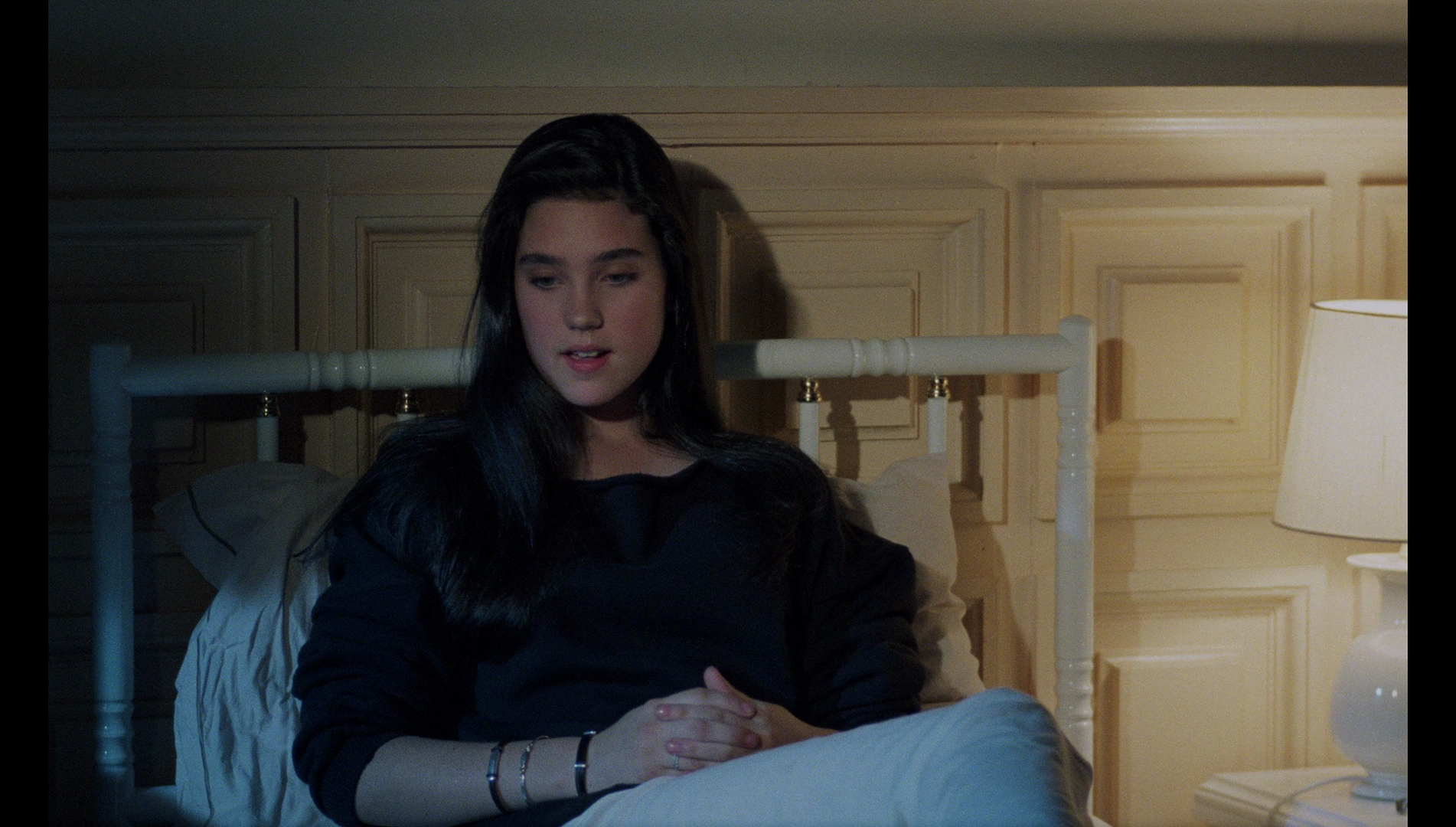 DISC ONE: DISC ONE:
Phenomena: the ‘integral’ cut (115:53) - Audio commentary with Troy Howarth. Troy’s commentary track begins by discussing the three key edits of the film. He offers a breakdown of individual scenes and discusses the work of some of the performers in the film (for example, Fiore Argento’s career subsequent to her appearance in Phenomena). Troy suggests that the fact that the film has something of a ‘tin ear’ for the dialogue is owing to the fact that Argento wrote the script in English, which is of course a second language to him. It’s a breathless commentary track, packed with observations and information. - Italian trailer (2:36) - English trailer (2:36) - ‘Jennifer’ music video (4:11). This music video, directed by Dario Argento for Claudio Simonetti’s track ‘Jennifer’, features Jennifer Connelly and riffs on some of the imagery from the film (intercut with Simonetti performing the track). - Gallery: Japanese pressbook (13 images) 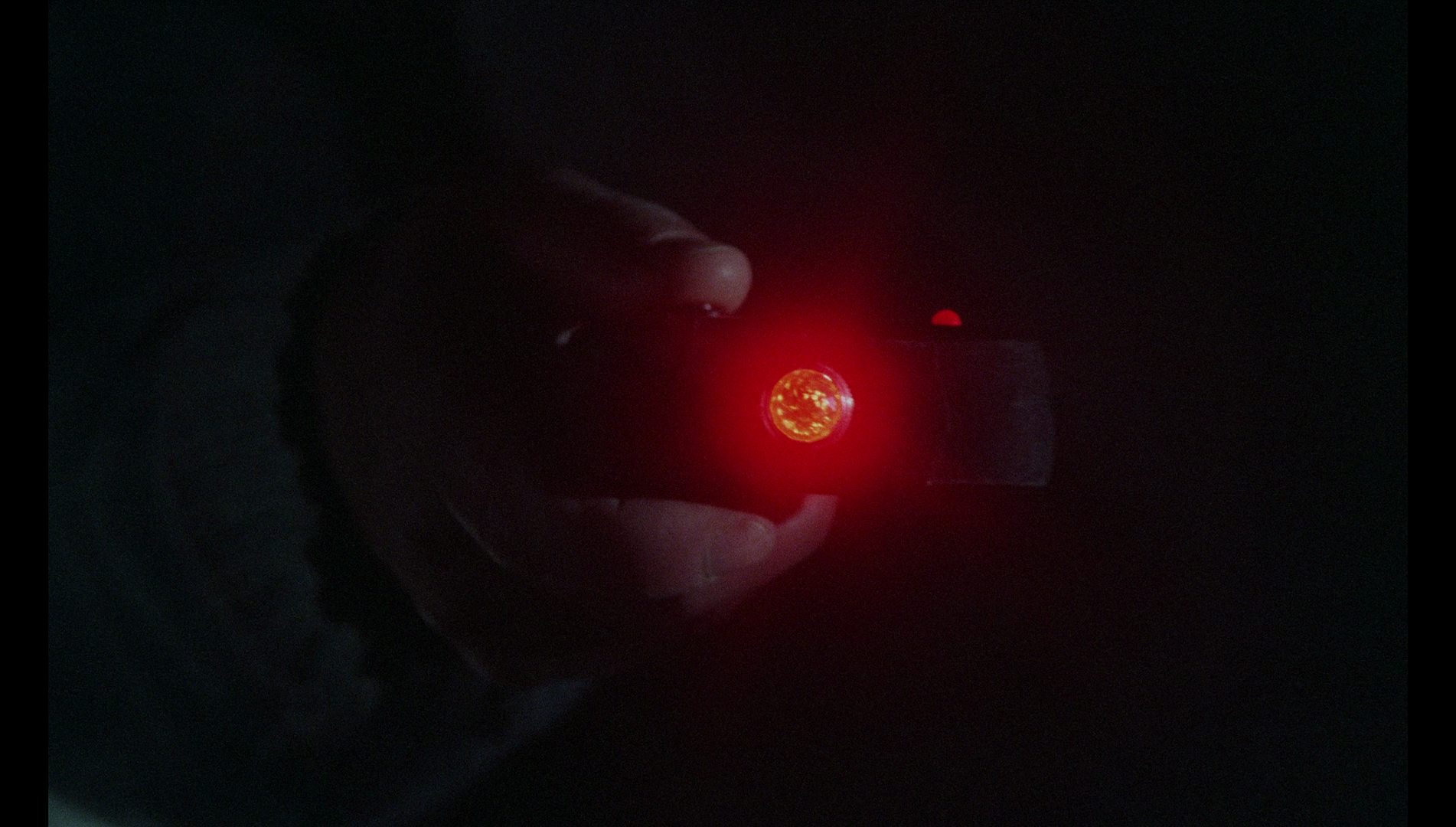 DISC TWO: DISC TWO:
Phenomena: the ‘international’ cut (110:06) - ‘The Three Sarcophagi’ (31:02). In this ‘video essay’, the producer of this release, Michael Mackenzie, reflects on the three main edits of Phenomena, discussing their differences. Mackenzie compares the relative benefits of the English and Italian audio tracks too. DISC THREE: Creepers: the US cut (83:03) - ‘Of Flies and Maggots’ (120:13). This exceptional documentary, newly-produced for this release, features numerous participants (including Argento, Nicolodi, Sergio Stivaletti and Luigi Cozzi) reflecting on the genesis of the film, its production and its lasting legacy. After the various glimpses into the production of this film that have appeared in previous documentaries about Argento (eg, Soavi’s Dario Argento’s World of Horror, 1985), one might think that there’s little new to say about Phenomena. However, this documentary proves that assumption to be incorrect. Retail copies included reversible sleeve artwork and a 23 track soundtrack CD.
Overall
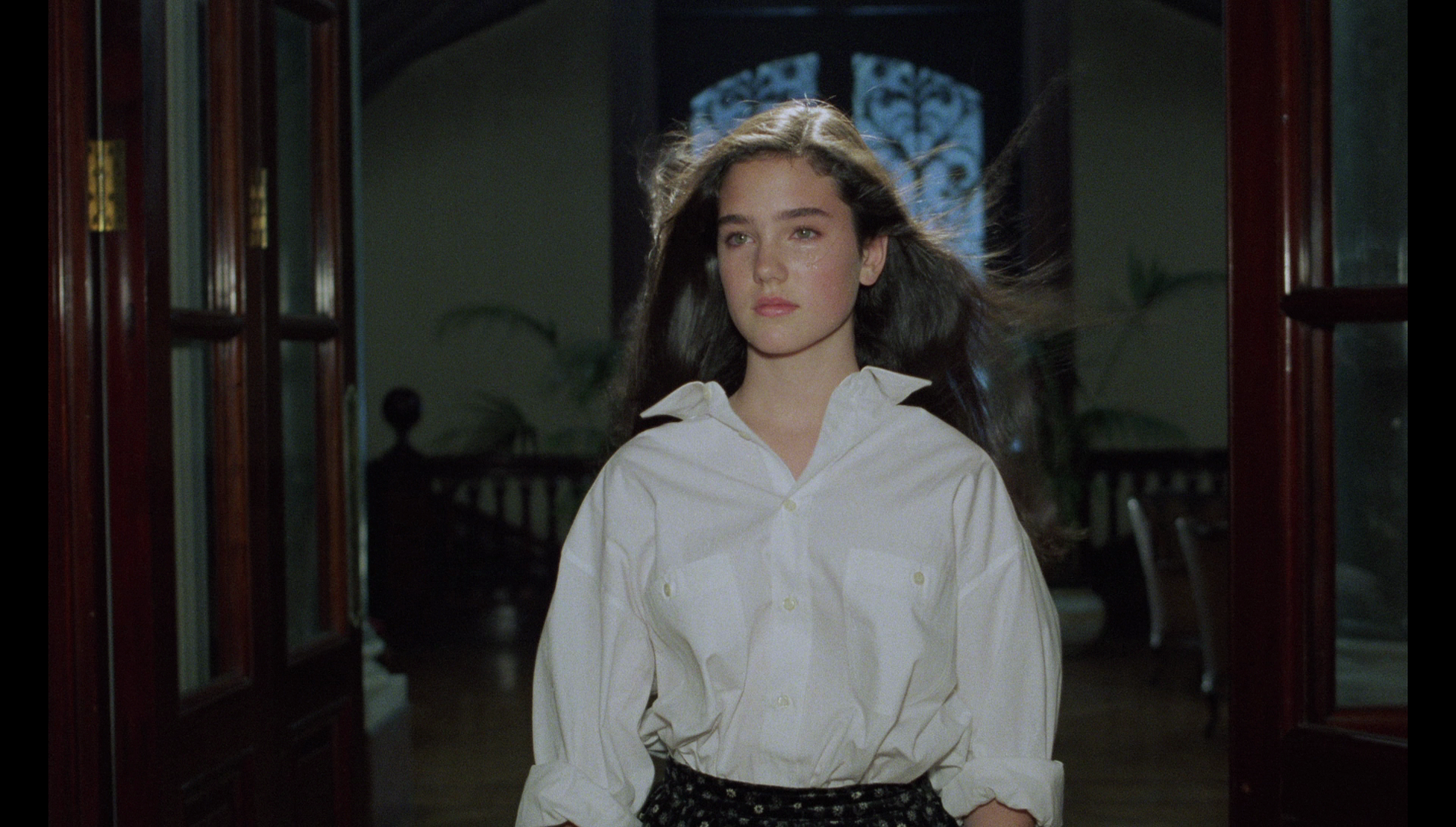 A bizarre, idiosyncratic film even within Argento’s eccentric body of work, Phenomena inspires equal amounts of love and hate. Its initial release, in the UK at least (via the abbreviated Creepers edit, with localised cuts imposed by the BBFC), was met even by ardent fans of the director with bemusement and frustration, the film’s more fantastical elements and narrative non-sequiturs being singled out for particular criticism. However, in retrospect the film seems a logical stepping stone in terms of the fascination with the fantastic that is present (albeit in a very subdued form) in the director’s more naturalistic examples of the thrilling all’italiana (for example, the retinal photography of Quattro mosche di velluto grigio), was amplified in Profondo rosso and Suspiria and became even more pronounced in the films Argento made following Phenomena. It’s a Marmite film, but in the age of digital home video – perhaps owing to ease of access to the international and ‘integral’ edits of the picture – its reputation seems to have grown. Certainly, its imagery is striking, even if the dialogue is often risible. Like Argento’s Suspiria and Inferno, Phenomena is perhaps best approached as an ‘adult’ fairy tale. A bizarre, idiosyncratic film even within Argento’s eccentric body of work, Phenomena inspires equal amounts of love and hate. Its initial release, in the UK at least (via the abbreviated Creepers edit, with localised cuts imposed by the BBFC), was met even by ardent fans of the director with bemusement and frustration, the film’s more fantastical elements and narrative non-sequiturs being singled out for particular criticism. However, in retrospect the film seems a logical stepping stone in terms of the fascination with the fantastic that is present (albeit in a very subdued form) in the director’s more naturalistic examples of the thrilling all’italiana (for example, the retinal photography of Quattro mosche di velluto grigio), was amplified in Profondo rosso and Suspiria and became even more pronounced in the films Argento made following Phenomena. It’s a Marmite film, but in the age of digital home video – perhaps owing to ease of access to the international and ‘integral’ edits of the picture – its reputation seems to have grown. Certainly, its imagery is striking, even if the dialogue is often risible. Like Argento’s Suspiria and Inferno, Phenomena is perhaps best approached as an ‘adult’ fairy tale.
Arrow’s new Blu-ray release of Phenomena is excellent in all ways. The inclusion of all three major edits of the film is to be praised: there’s little difference, in real terms, between the ‘integral’ and international edits, though it’s good to have both of them presented here; and the Creepers edit is so incredibly different to both longer cuts of the film that its inclusion here is a coup for the film’s fans. Across the board, the presentation/s of all three edits are superb, offering a marked improvement over Arrow’s previous Blu-ray release of the same film. In addition to this, the set includes some incredible contextual material: Troy Howarth’s commentary is very good, the video essay by Michael Mackenzie is impressive and nicely-edited, and the retrospective documentary is amazingly indepth. In sum, though the merits of the film may be contentious even amongst Argento’s fans, Arrow’s new Blu-ray release is first-class. For fans of Italian genre cinema, this may very well be one of the most significant Blu-ray releases of the year so far. References: Ehrenreich, Barbara & English, Deirdre, 1978: For Her Own Good. New York: Doubleday Koven, Mikel J, 2006: La Dolce Morte: Vernacular Cinema and the Italian Giallo Film. Scarecrow Press Nerenberg, Ellen, 2012: Murder Made in Italy: Homicide, Media, and Contemporary Italian Culture. Indiana University Press Comparisons with Arrow’s previous Blu-ray release. Old Arrow release: 
New Arrow release: 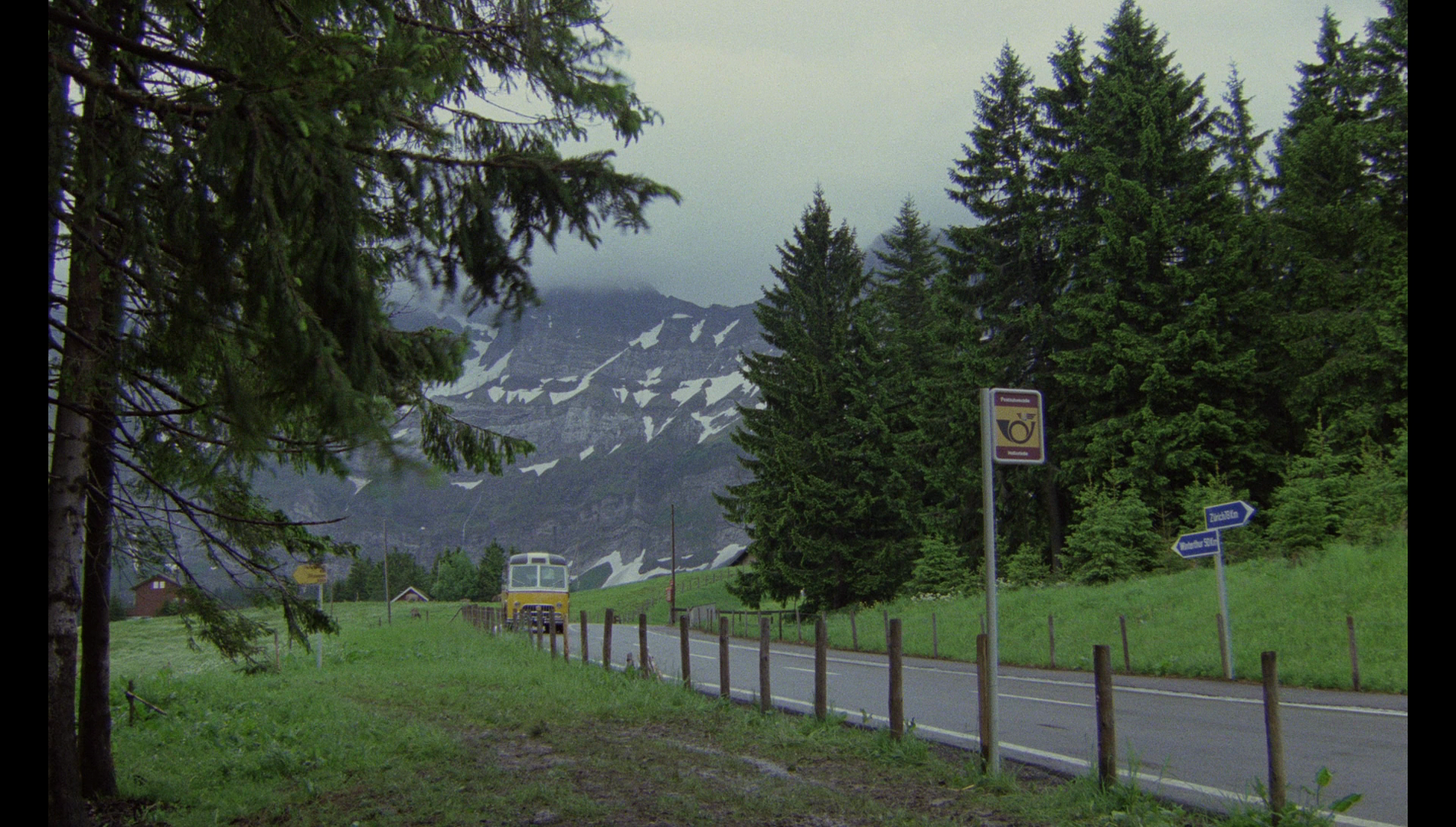
Old Arrow release: 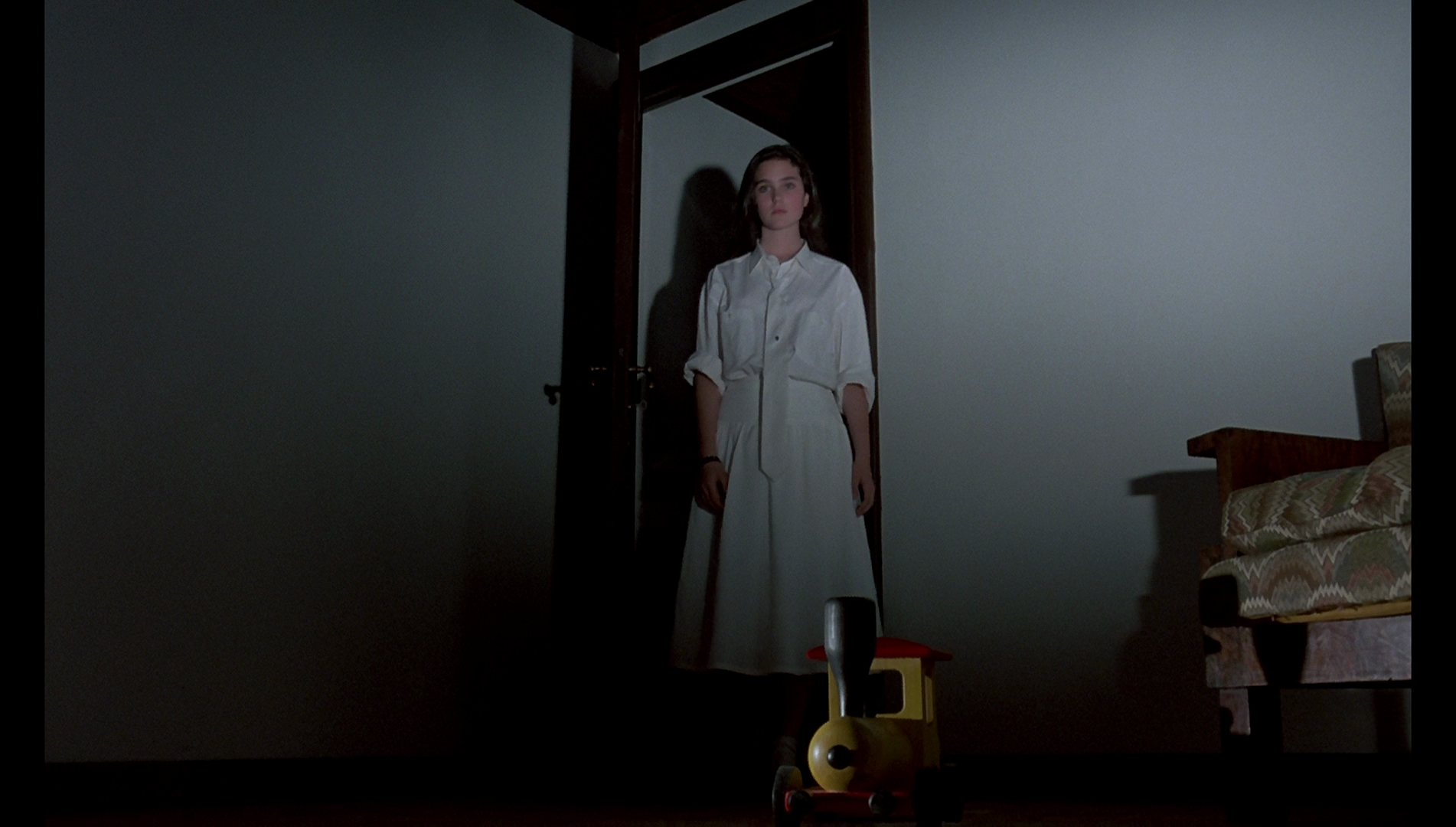
New Arrow release: 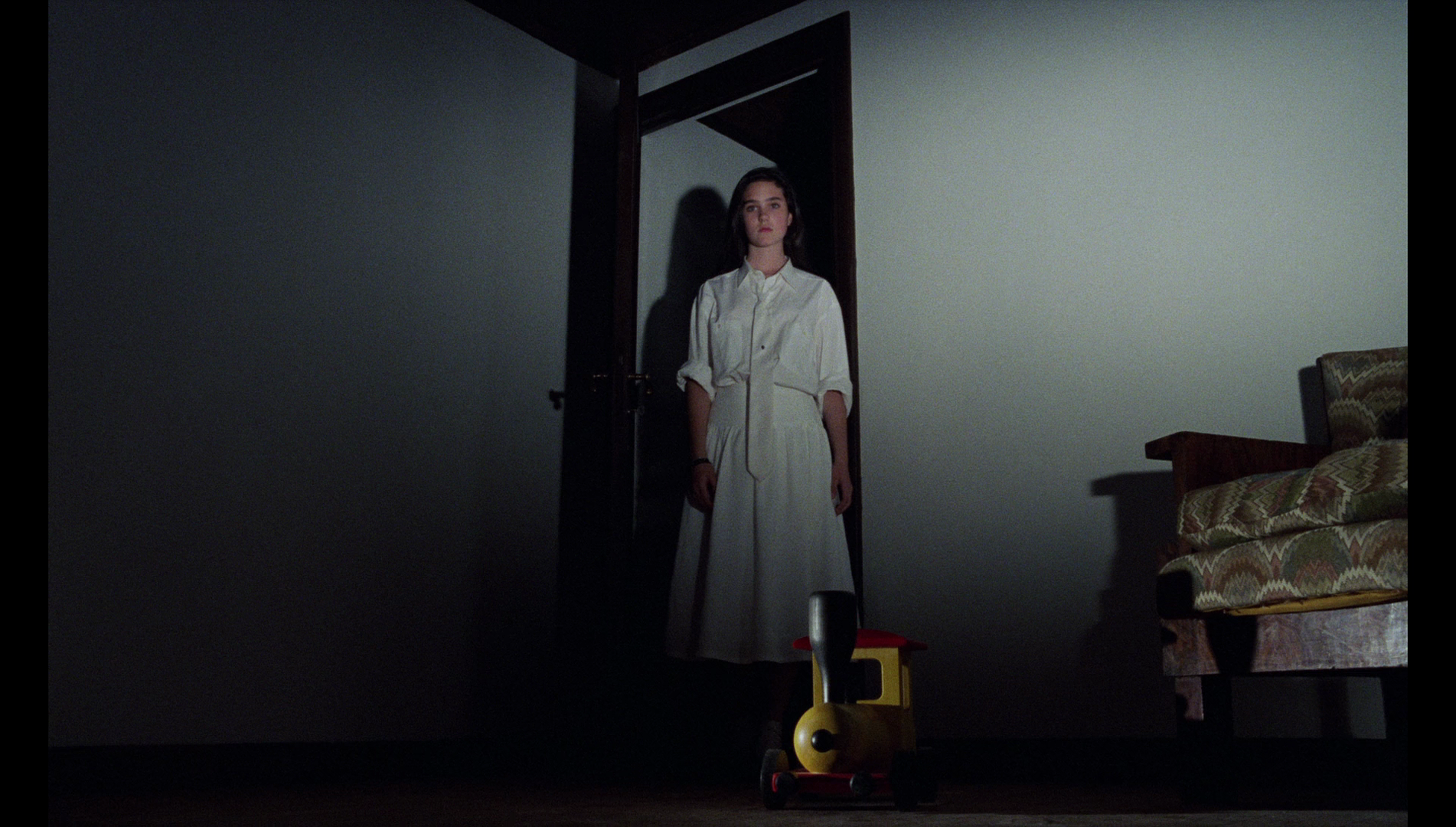
Old Arrow release: 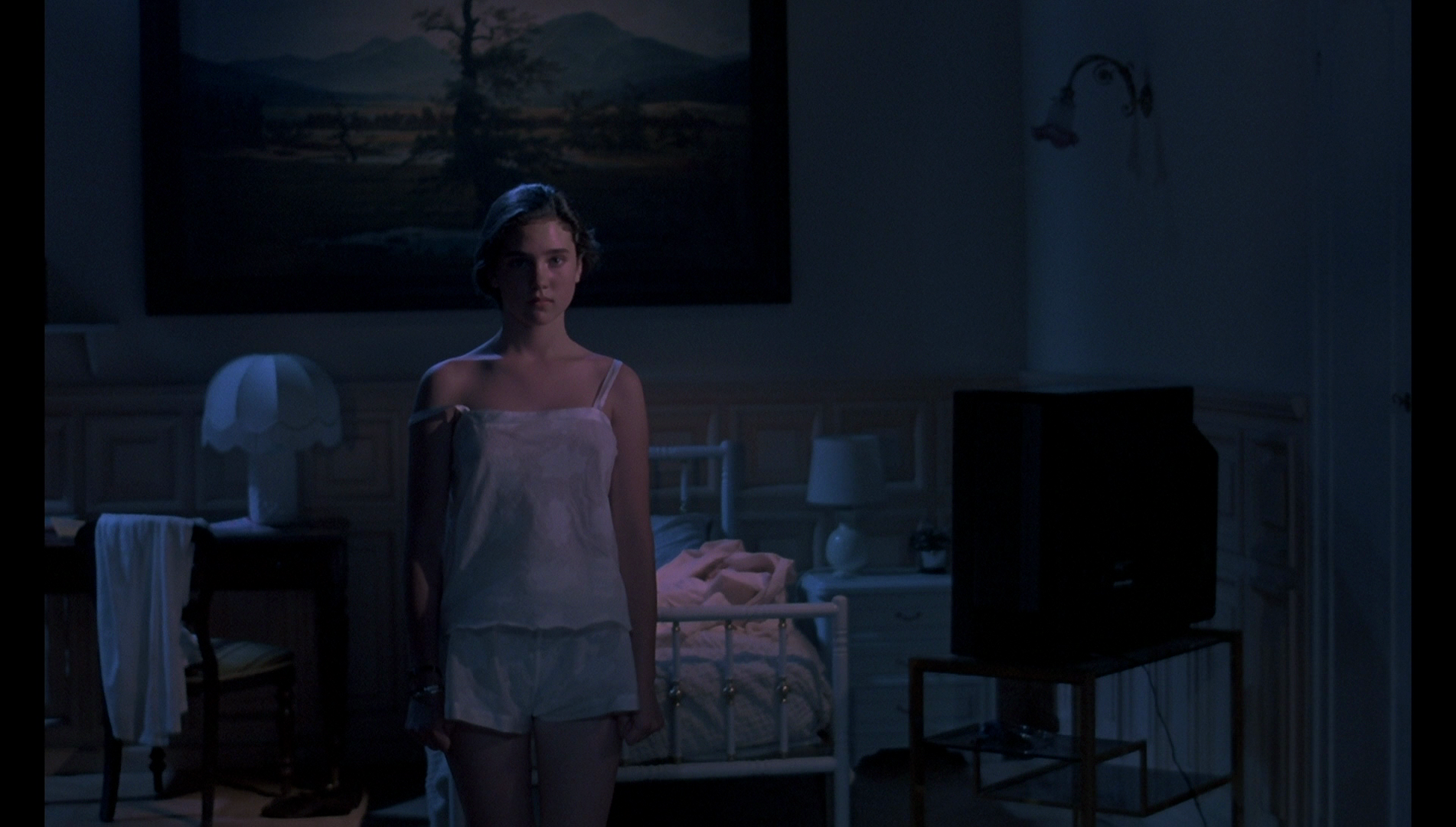
New Arrow release: 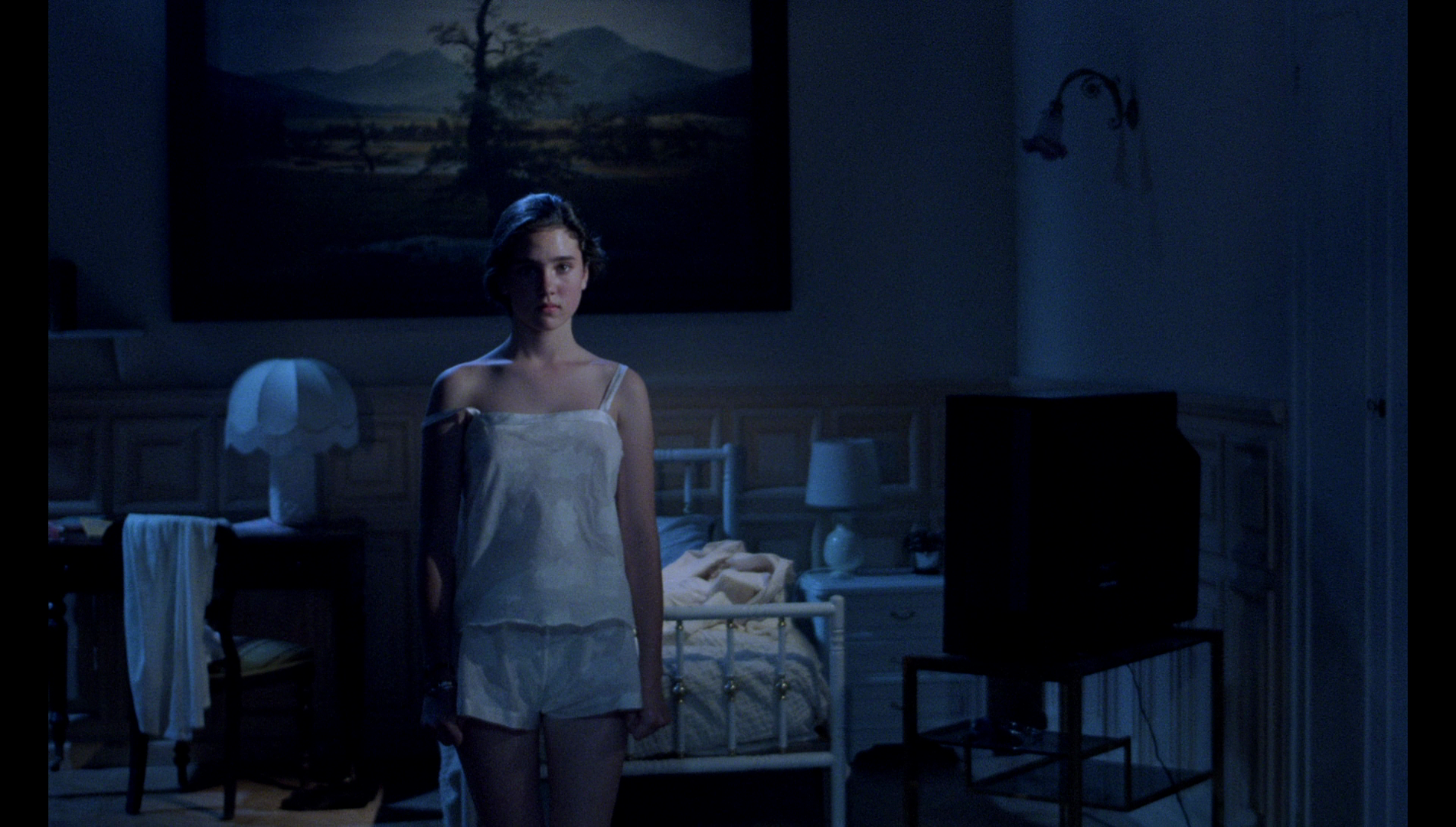
Old Arrow release: 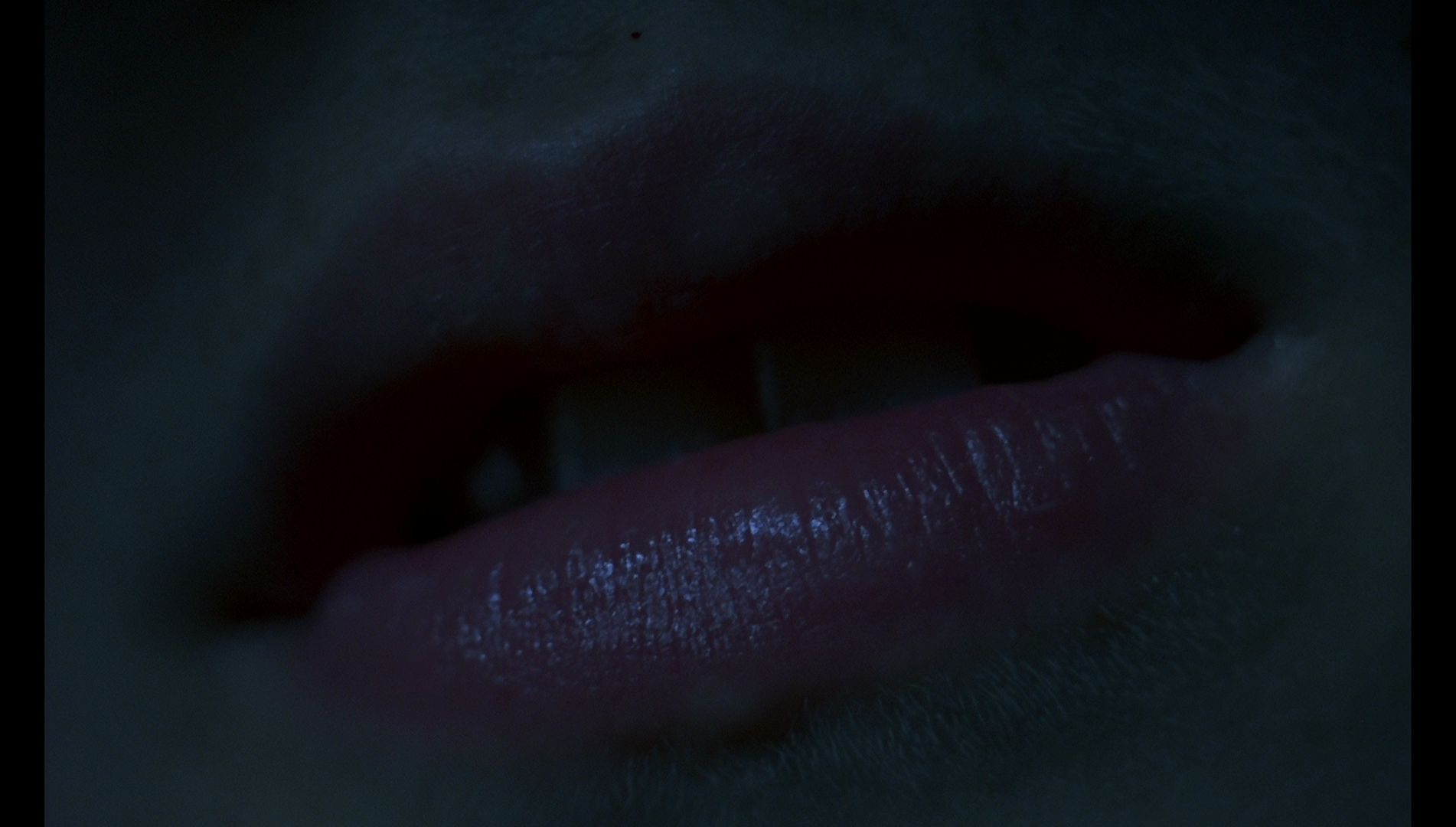
New Arrow release: 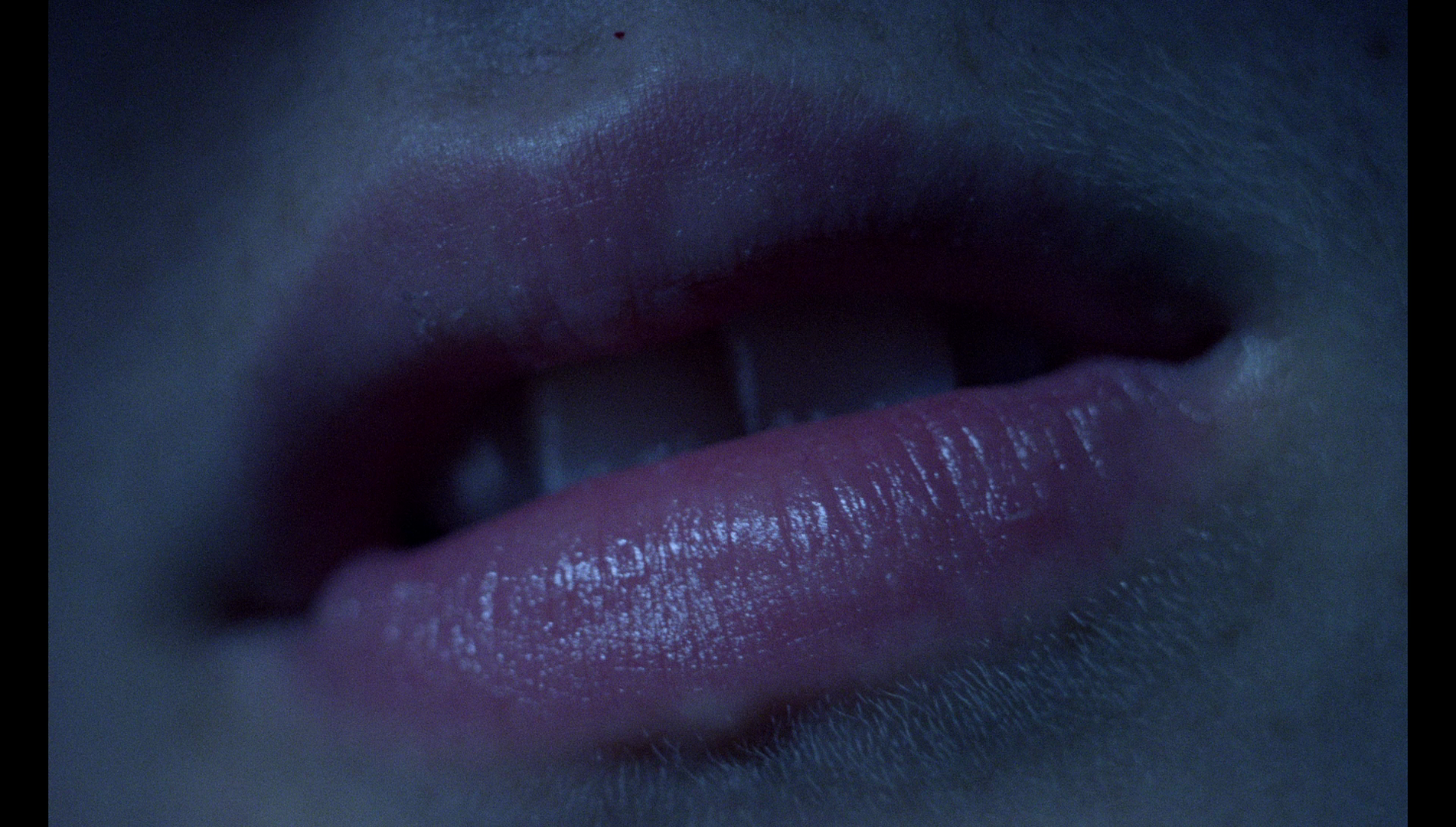
Old Arrow release: 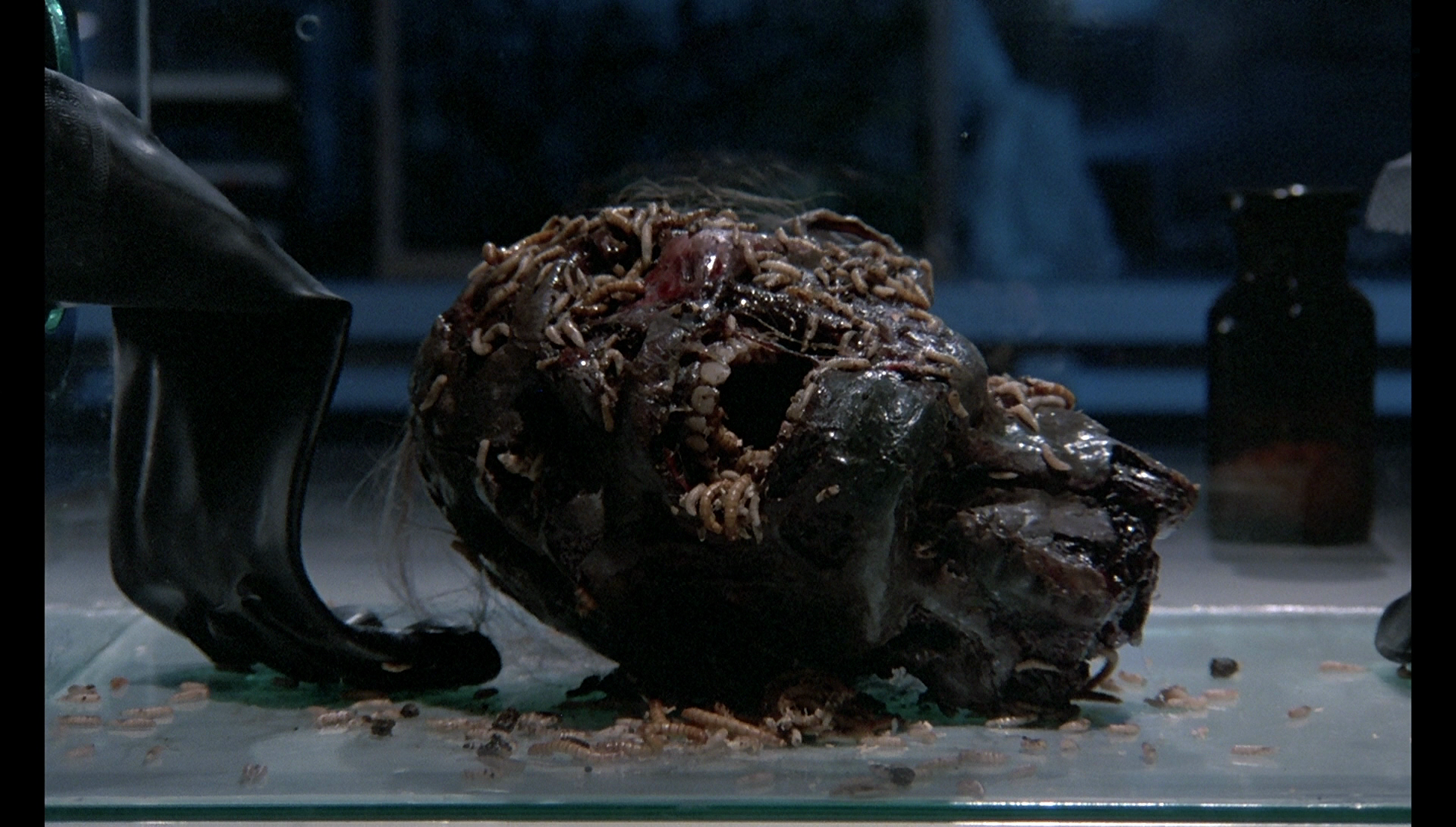
New Arrow release: 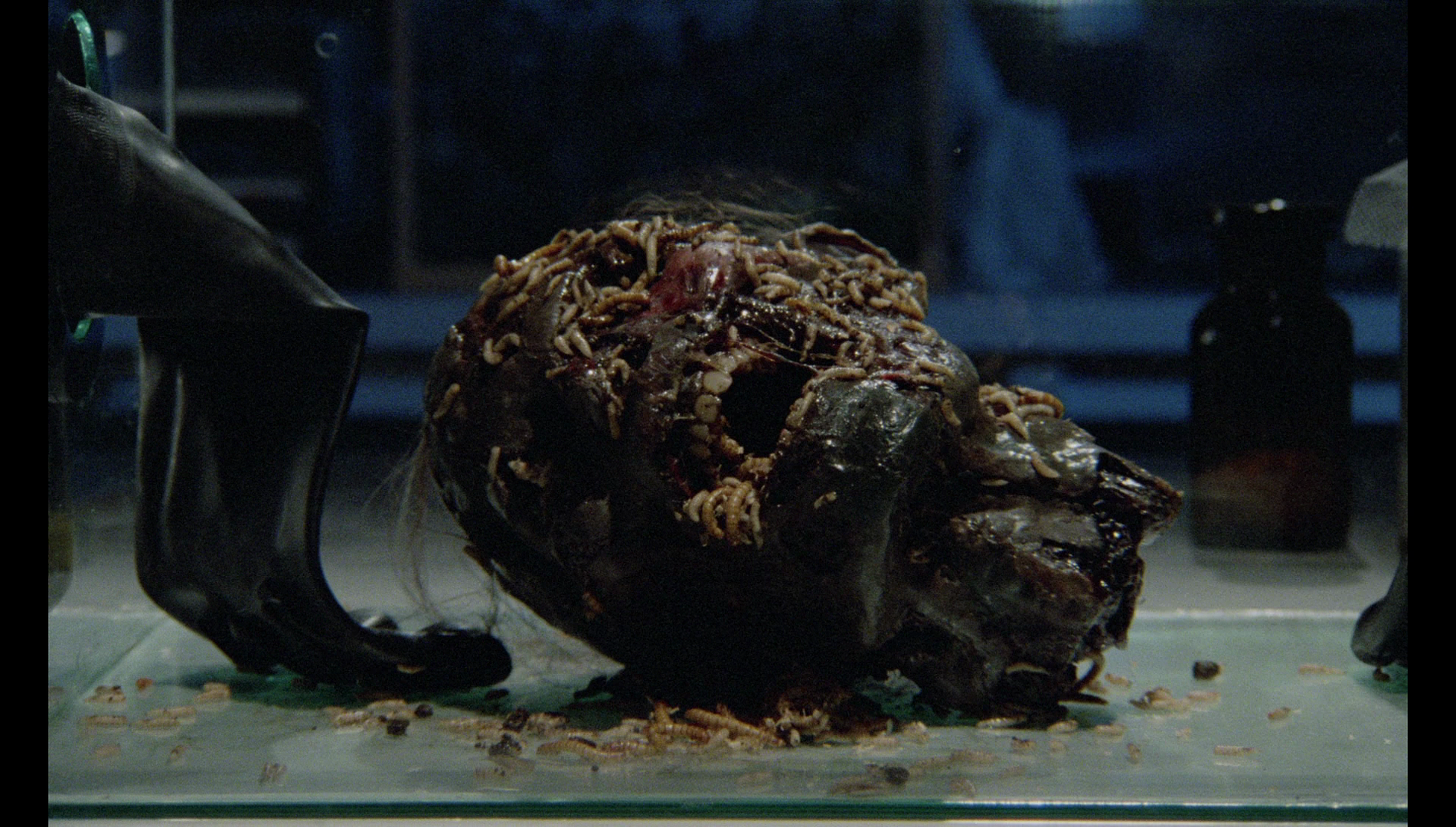
Old Arrow release: 
New Arrow release: 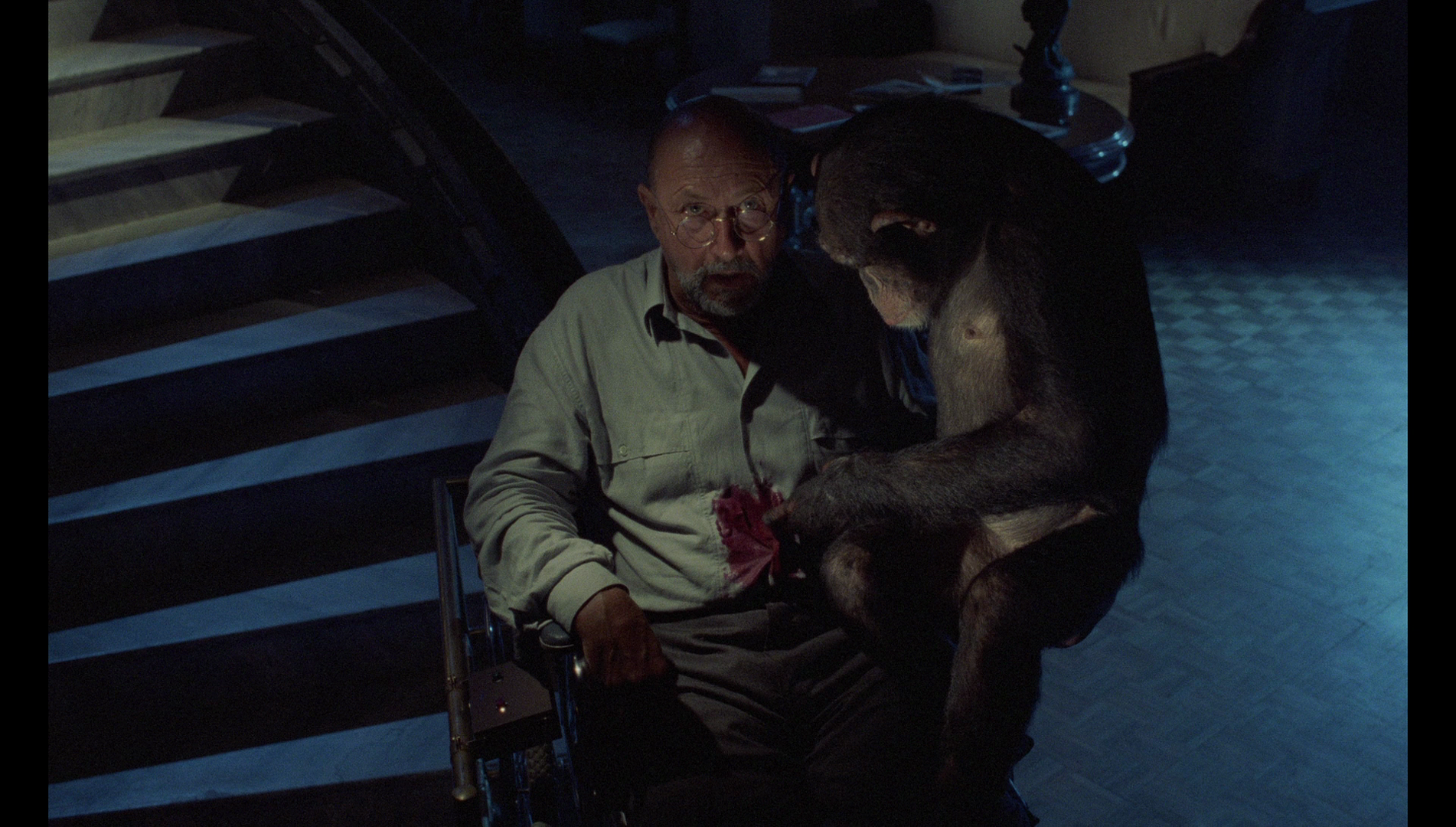
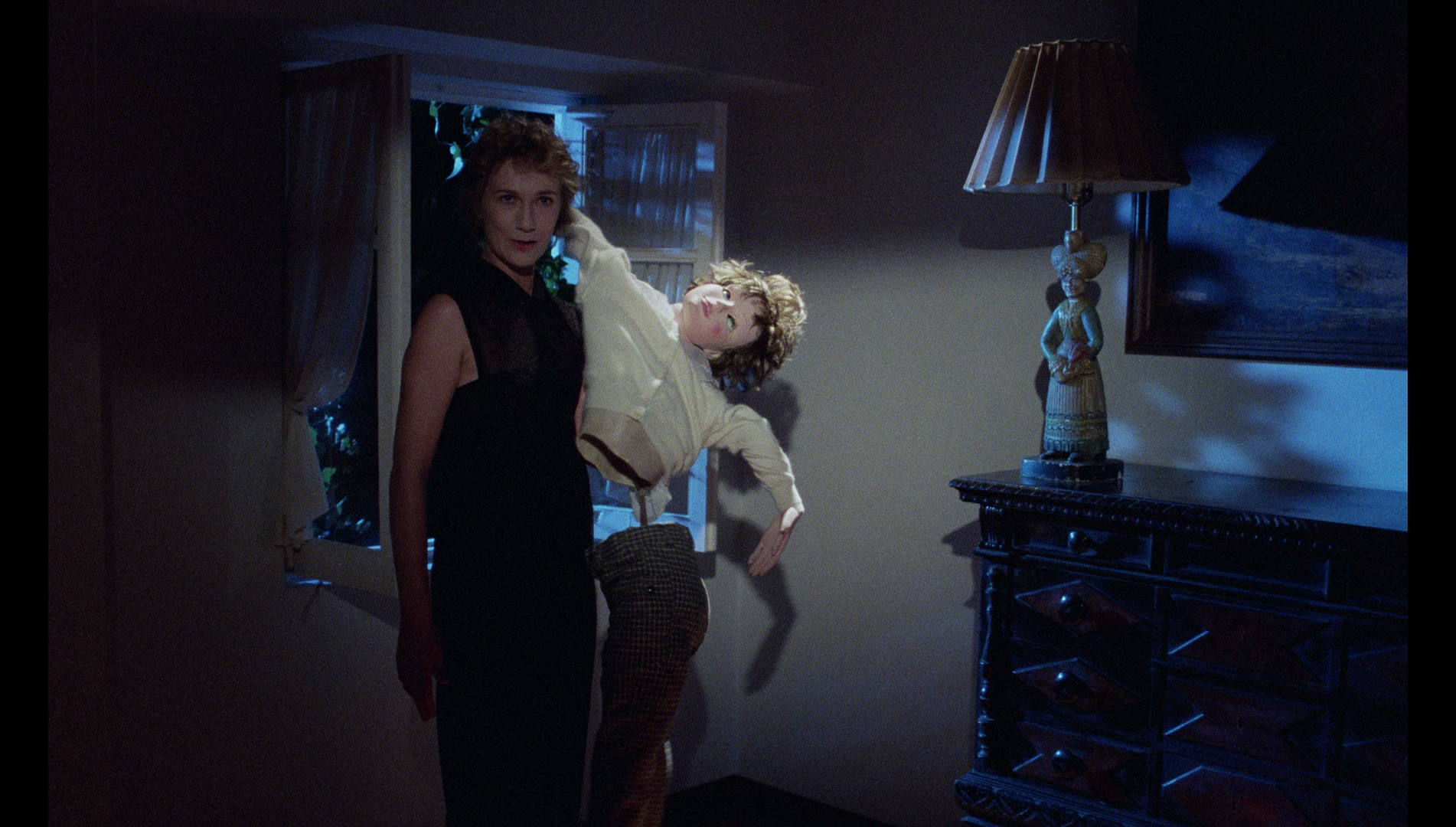
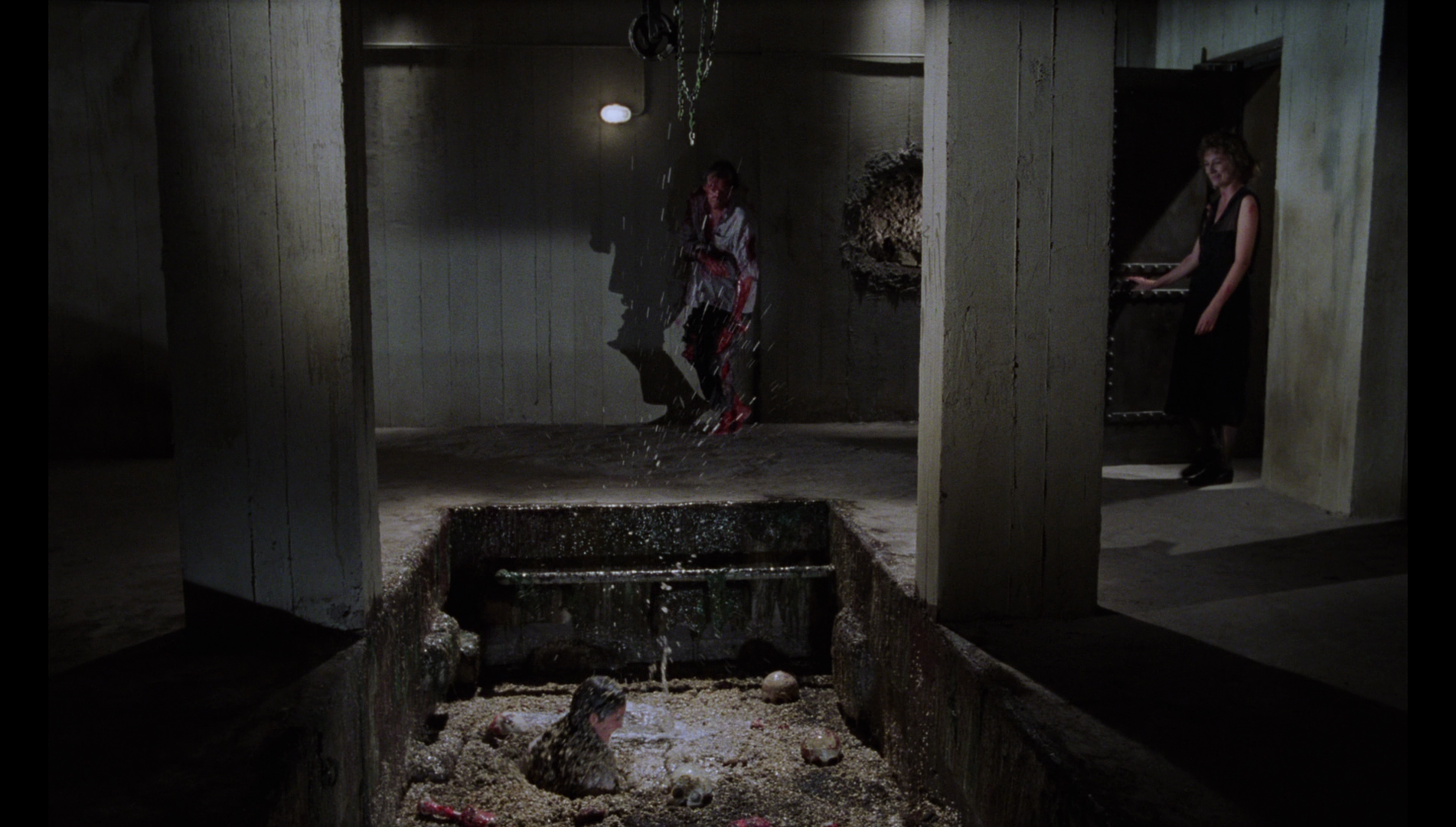


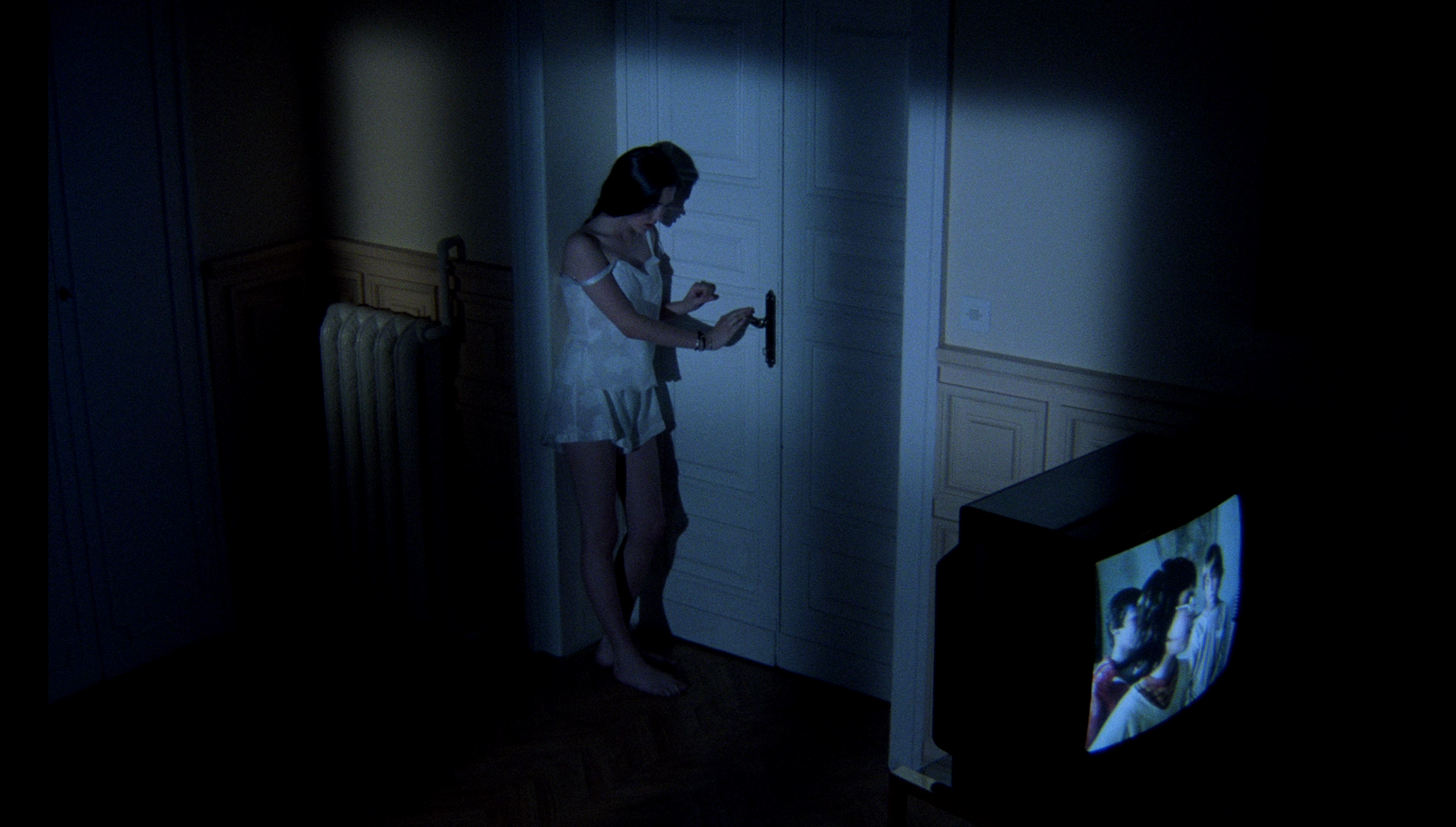
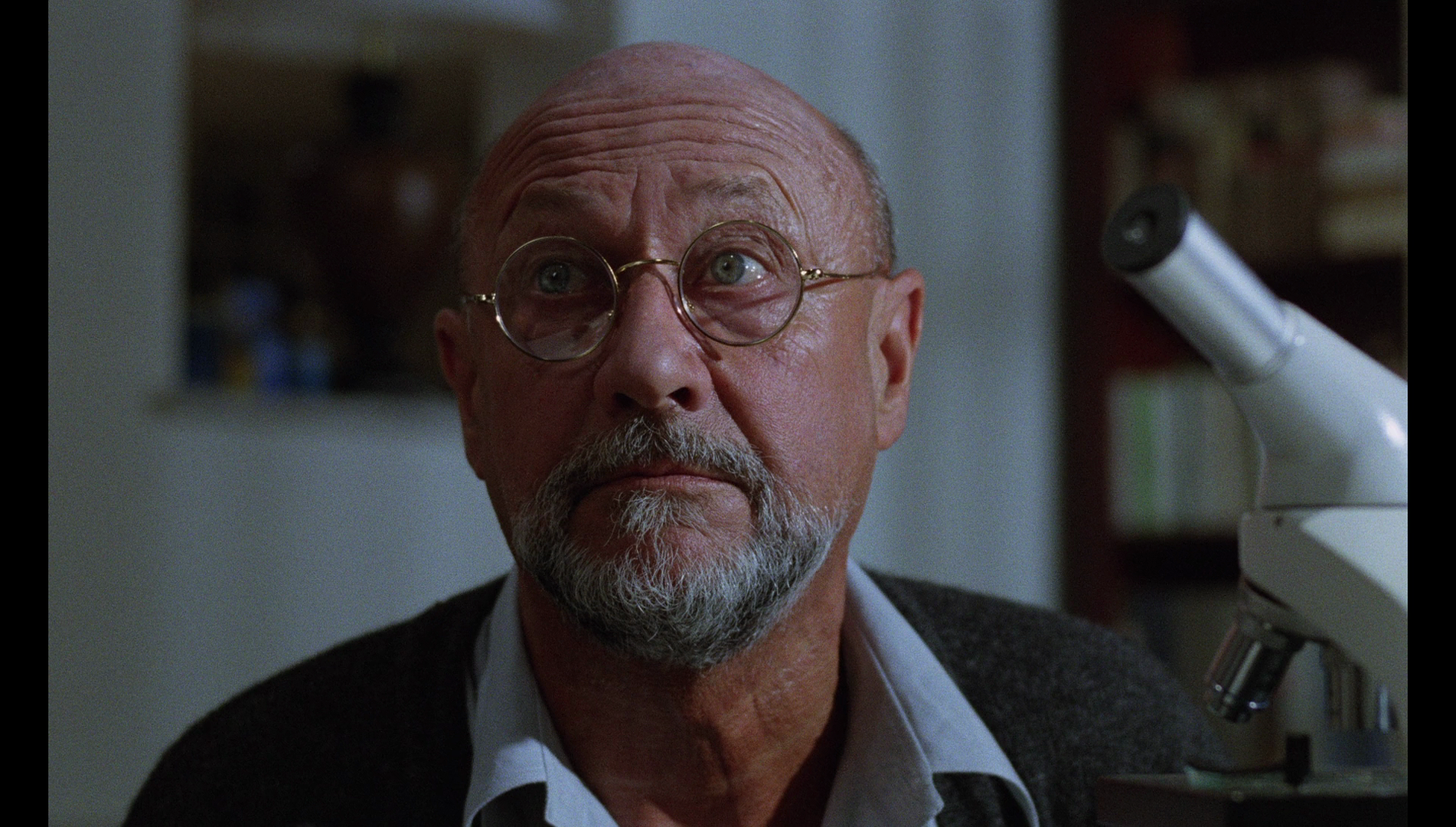
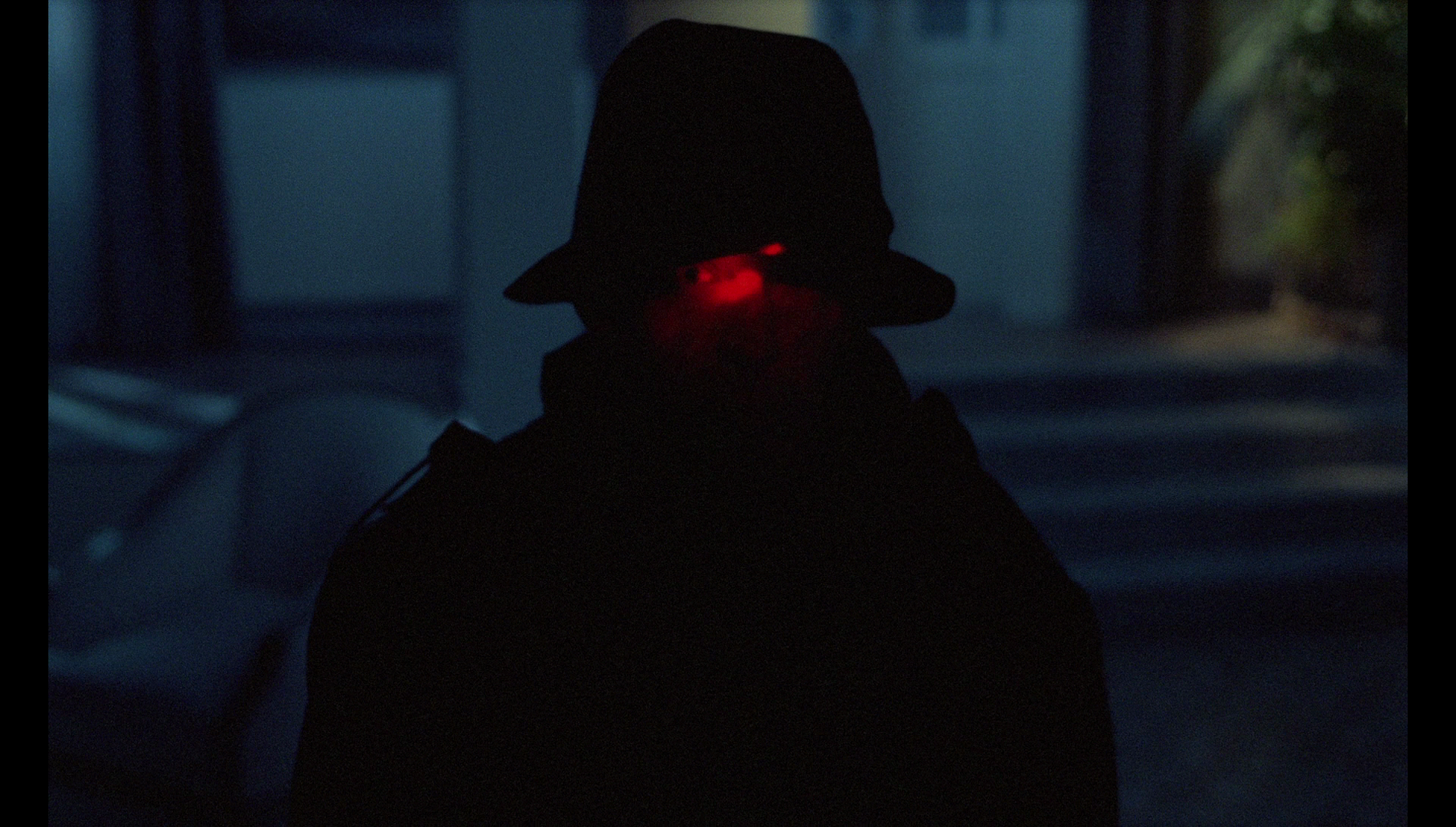
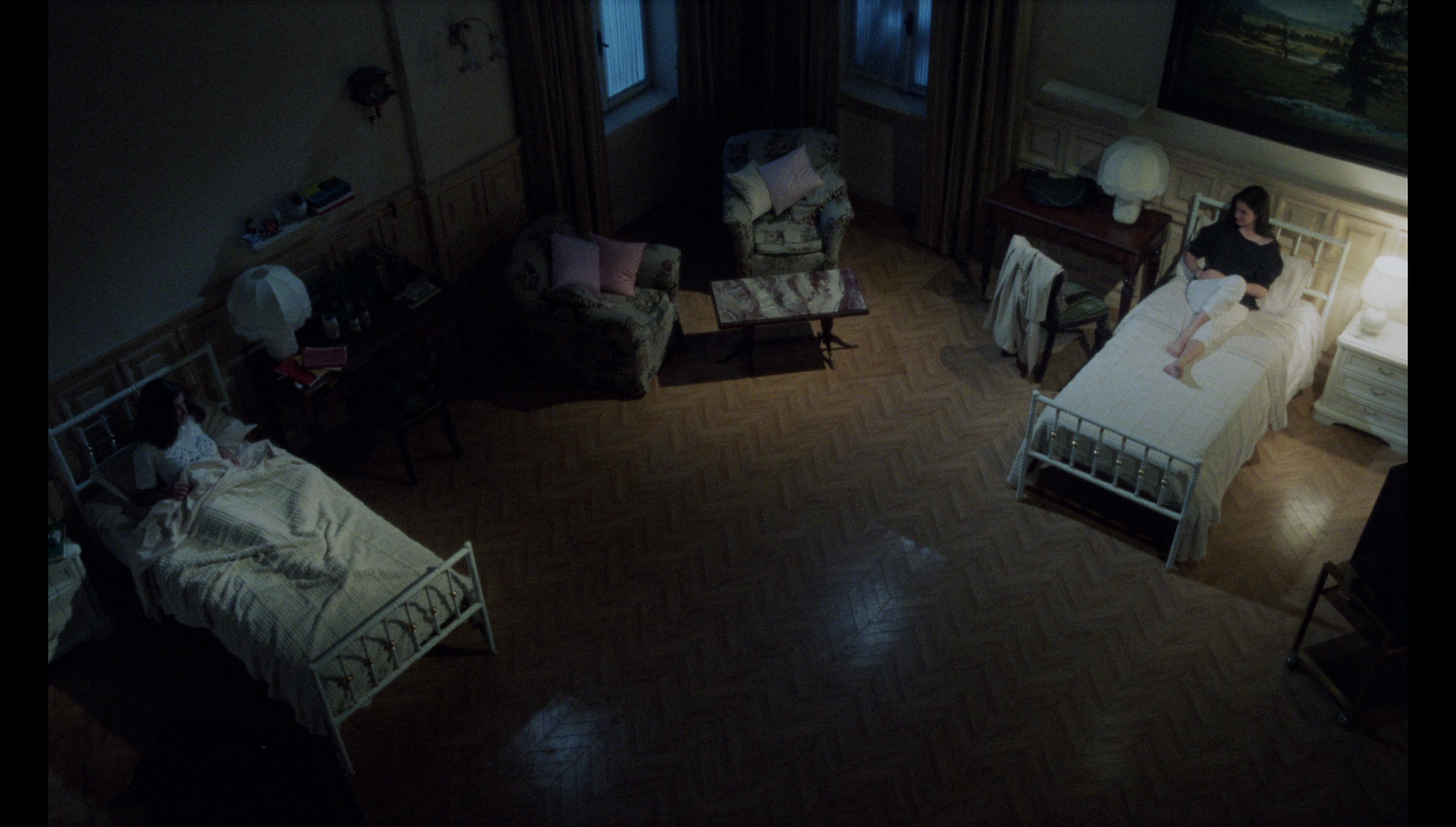
|
|||||

|